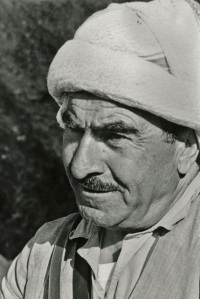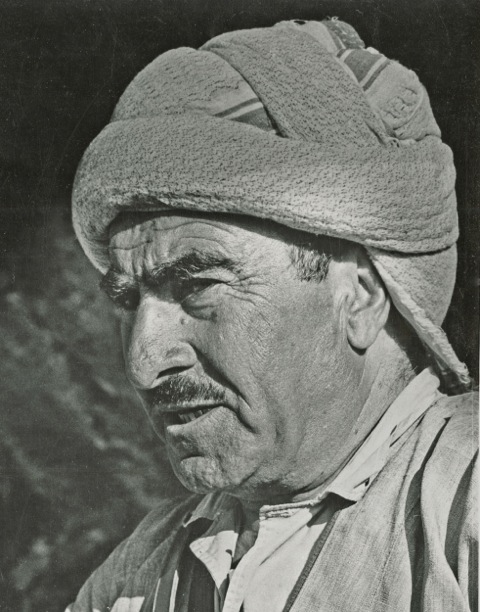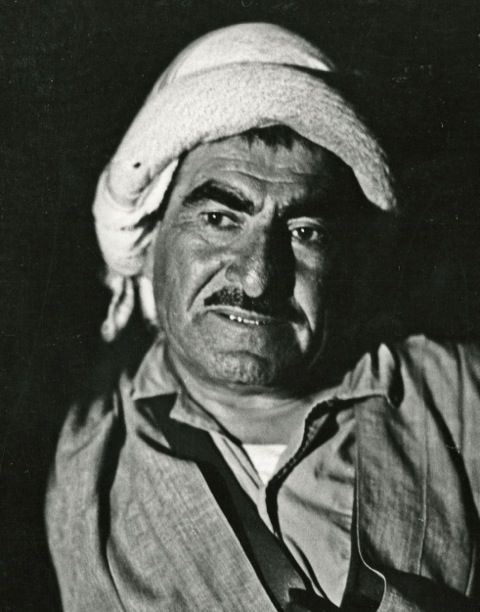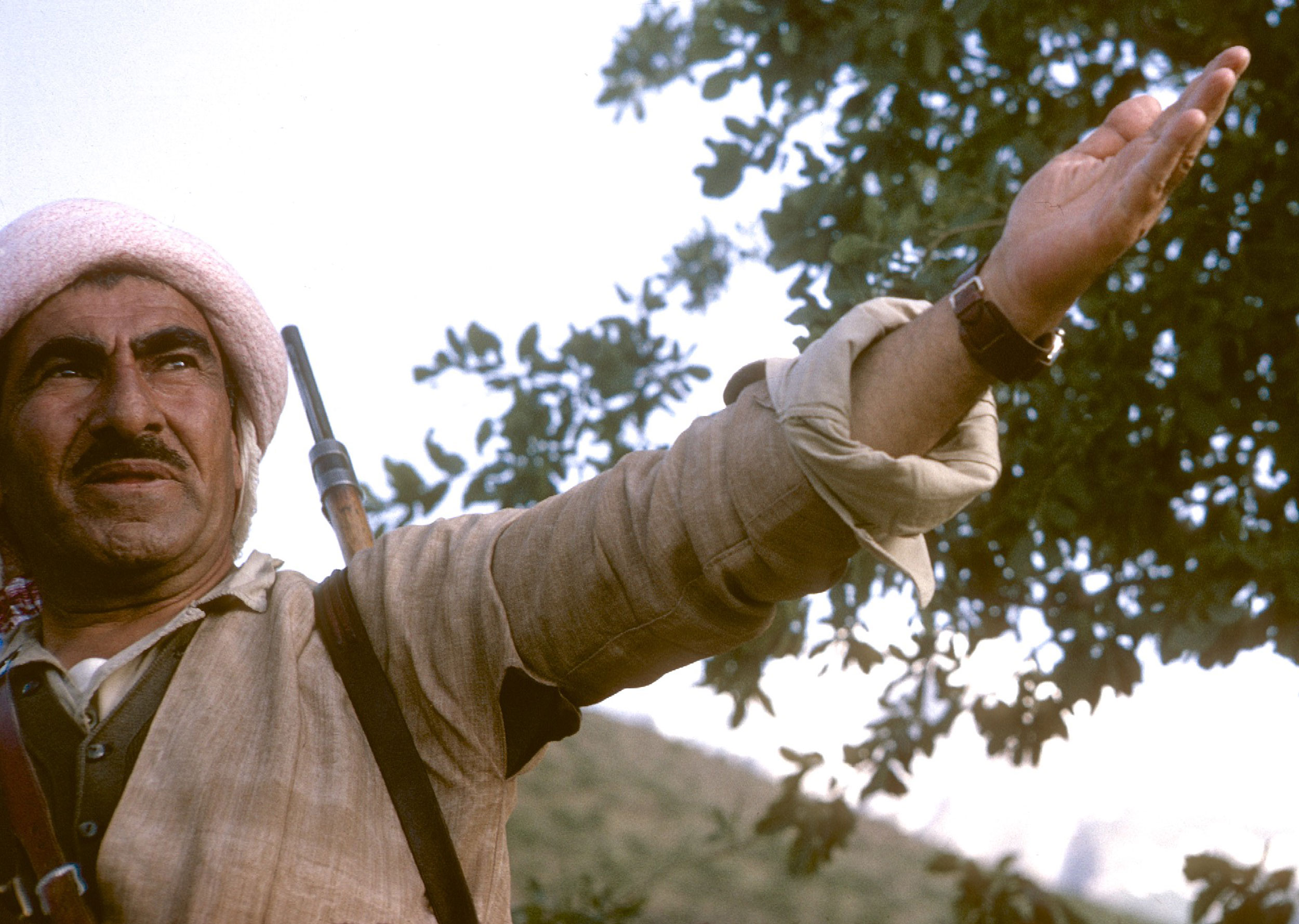William Carter – Discovering the World and Ourselves
Ed. note: this guest post written by Ms Esther Wan was originally published on the blog Special Collections Unbound of the Stanford University Library Special Collections, authored by Laura Wilsey.

American photographer William Carter’s collection of digitized photographs was my first project for Special Collections and having just joined the team at the end of February, I soon found myself sheltered-in-place by mid-March and working from home. Despite the shrinking of my physical world, Carter’s images enabled me to continue exploring far-away places and times past – a fortuitous experience as one who now finds everyday life sometimes more strange than visually traveling through parts unknown.
Spanning a career from the 1950s until the 2000s, Stanford alum (1957) William Carter’s work and travels gave him access to diverse subjects and places and enabled him to document not only specific moments in time but also broad themes common to all cultures. Concepts such as friendship, spirituality, and survival, and human expressions found in curiosity, pride and tenderness can be seen in his imagery – caught from observing people just going about their daily lives or while waiting for those glimpses of quiet vulnerability.

His early works came from assignments that included the New York Times, Trans World Airlines, and Women’s World Daily and spanned far-flung places such as New York, London, Egypt and Yemen in the early to mid-1960s. Photos of celebrities, farmers, children in play and work, street life in villages and cities abound from these travels. Carter’s career-making moment as a photojournalist was established during his journey with Kurdish Peshmerga guerrilla soldiers in northern Iraq while on assignment for Life Magazine in 1965 and yielded a 6-page spread and imagery of a Kurdistan and its peoples still unknown to many. Later, he became involved with longer-term book projects for Sunset Publishing and his portrait close-ups and landscapes of California and the American Midwest of the late 1960s and 1970s resulted from these ventures. William Carter’s personal interests in jazz and blues music, spirituality, and fine art also led to subjects ranging from master musicians such as Louis Armstrong, Manny Sayles and De De Pierce to Tibetan monks and Indian peoples, and abstract landscape and nude photography.

Researching and creating metadata for William Carter’s digitized photographs across such diverse geography and time without the ability to directly consult his film negatives and prints required some creative thinking. First-hand sources such as Carter’s 2011 book “Causes and Spirits”, his blog, video interviews with Tony di Gesu and Dawn Hope Stevens and tapings of his book launch at Kepler’s Books enabled me to identify some images. When these avenues fell short, other institutions’ digital photographic collections – such as those from the J. Paul Getty Museum, SFMOMA and the National Gallery of Art – were also helpful. Occasionally, Carter’s image names provided clues as in the cases of his step-grandson’s portraits and that of the 6th Marquess of Bath. While in other instances, elements in the photos themselves gave chase down various ‘rabbit holes’ such as the name of a Royal Canadian naval destroyer on a sailor’s cap, seeing Prince Philip, Duke of Edinburgh, at a gala premiere, or identifying legendary Illinois football coach Bob Reade during a team practice. As one who enjoys “finding things”, it was immensely satisfying for me to be able to establish connections between seemingly disparate images and to locate details needed to accurately document this collection.

Viewing William Carter’s photographs, one is often left with a haunted feeling of times and places that no longer exist – and yet also the temerity of the human spirit to survive and flourish. At this moment when our worlds are in uncharted territory due to pandemic and unrest and we have been asked to re-examine our own human frailties and strengths, there is much to be found in William Carter’s imagery for reflection and inspiration. The digital images are projected to be accessioned into the SDR and made available via SearchWorks for viewing by the end of June.

COVID-19: A New Threat to Kurds in Syria and Iraq and a Way Forward
The Refugees International website will host an online conference tomorrow morning , April 8, 2020 at 9:00 EDT. Refugees International advocates for lifesaving assistance and protection for displaced people. “We are independent and do not accept government or UN funding.”
Here is the link to their web page and content contained therein:
As the COVID-19 epidemic spreads across the Middle East, the population in Northeast Syria and Kurdistan Region of Iraq (KRI) face similar challenges. Both Kurdish majority regions host large populations of displaced people who have fled civil war and the conflict with the Islamic State. Even before the COVID-19 crisis, the total number of those in need of humanitarian assistance figured in the millions. The United Nations warns that access to healthcare in Northeast Syria and in KRI for the displaced is increasingly limited. COVID-19 has the potential to devastate these already-vulnerable communities.
Refugees International and the Columbia University Institute for the Study of Human Rights invite you to an on-the-record web event exploring the COVID crisis in the Kurdistan Region of Iraq and in Northeast Syria, the effects of this crisis on the displaced people in these regions, and a way forward.
Host: Hardin Lang is Vice President for Programs and Policy at Refugees International.
Speakers:
Bayan Abdul Rahman is the Representative of the Kurdistan Regional Government to the United States.
Sinam Mohammed is Representative of the Syrian Democratic Council to the United States.
Rapporteur
David L. Phillips is the Director of the Program on Peace-building and Rights at Columbia University’s Institute for the Study of Human Rights.
Q&A will follow.
SFTJF Online Exhibit: Maximum Vibration
From 1990-2015 I served as Chairman of the San Francisco Traditional Jazz Foundation. This April the Foundation launched The Great Jazz Revival, The Charles N. Huggins Project, an online multimedia history of Traditional Jazz in the San Francisco Bay Area from the Barbary Coast to the 1980s told through historic images, recorded sound, articles, scores and film. You can watch a video overview of the project here. Read San Francisco Chronicle columnist Carl Nolte’s exploration of the jazz heritage documented in Stanford University Library’s online exhibit in his article Homegrown Jazz Preserved.
One focus of the online historical collection is on the many first-generation jazzmen who settled during the 1950-60s in the Bay Area, where they found new audiences for their traditional approach to the jazz from their roots in New Orleans and elsewhere. Such figures as Kid Ory, Earl Hines, Bunk Johnson, Pops Foster, Darnell Howard and others enriched the San Francisco jazz scene and inspired younger players like Lu Watters and Turk Murphy to carry the torch of traditional New Orleans jazz. I was lucky to have known and photographed some of these men.
From 1958-63, the great New Orleans reedman Frank “Big Boy” Goudie was a notable figure in the San Francisco jazz revival, during which time the former tenor saxophonist played only clarinet. He had spent most of his previous career among many American expatriate jazzmen living and working in Paris. In the Bay Area he developed a distinctive personal style with a rich, husky tone and flowing lines that oozed Creole Louisiana tradition. I got to know him, played a few duets, and interviewed him.
Living in Berkeley, California at the time, not far from singer Barbara Dane’s home, I photographed Frank at a little party at her house around 1958. Frank had probably put on a tie for the occasion. He had also come, weeks before that, to my place on Sterling Road for a little jazz party, where we first played duets with some old hands of the Berkeley jazz establishment. Within a month or two he was gigging all around the Bay Area with folks like Jim Leigh and Dick Oxtot and Bob Mielke, at private events, and at sit-ins at San Francisco’s Pier 23. Goudie long had a side profession (like many New Orleans originals) — as an upholsterer. I.e. he well knew how to survive.
That he had worked in Paris with Django Reinhart was not lost on any of us. His tough inner core was belied by the genuine charm and winning personality evident in this portrait. As with New Orleans jazz, “playing for the people” proved adaptable to any time, and place.
New Orleans bass stylist Wellman Braud (1891-1966) reached the top of his profession as a mainstay with Duke Ellington, plus many other engagements. Like a number of the classic jazzmen, Braud descended from a Creole musical family–several of whom, such as his cousin, bassist McNeil Breaux, used an alternate spelling of the French-derived last name. Like many another jazz pioneer, Wellman eventually settled in the Bay Area, accepting gigs such as with blues singer Barbara Dane. In this photo you can see that one of the strings of the bass fiddle (second from leftmost) is not aligned with the others. I’m told by bass players that this was because I was lucky to have captured the exact moment when Mr. Braud had plucked the A string of the bass, which was at that moment at its maximum vibration.
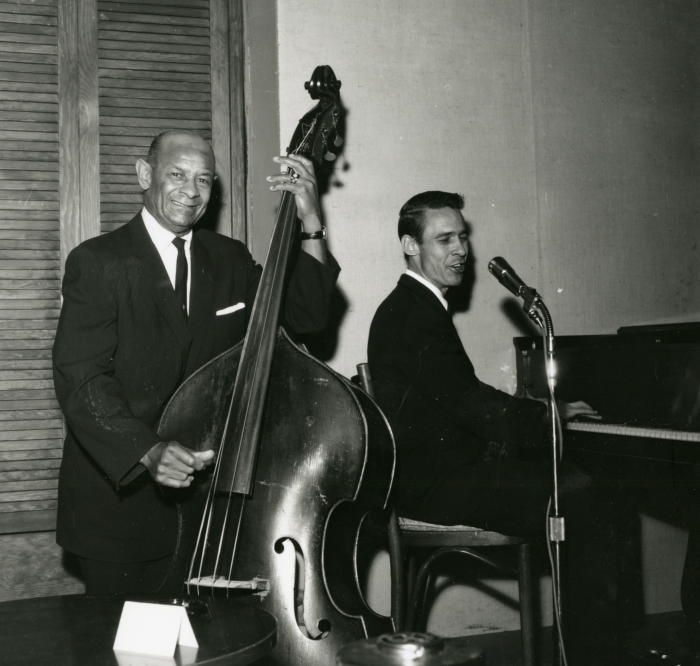
Bassist Wellman Braud; pianist/trumpeter/vocalist Kenny Whitson at Sugar Hill, San Francisco, 1961, photograph © William Carter
In 1955, as a twenty-year-old clarinetist, I toured the US and recorded at the New Orleans Jazz Festival with trombonist and bandleader Turk Murphy (see LP album cover art below). Turk’s best known band, the Turk Murphy Jazz Band, started in 1952 and performed continuously until his death in 1987. During the 1950s and early 1960s, the band was at its peak of popularity, touring annually, recording for major labels such as Columbia, and performing as often as six days a week at Earthquake McGoon’s, Turk’s jazz club which was home base for the band between 1960 and 1984. Turk, his club, and his band were fixtures of the San Francisco scene for decades. McGoon’s served as both a tourist destination and a meeting place for a local crowd of regulars who came to listen, drink and dance.
“A typical night at McGoon’s would find the dance floor crowded with a wide range of fans—from older couples who had danced to the Yerba Buena Jazz Band at the Dawn Club and Hambone Kelly’s, to young people learning to dance to traditional jazz for the first time.” SFTJF Online Exhibit
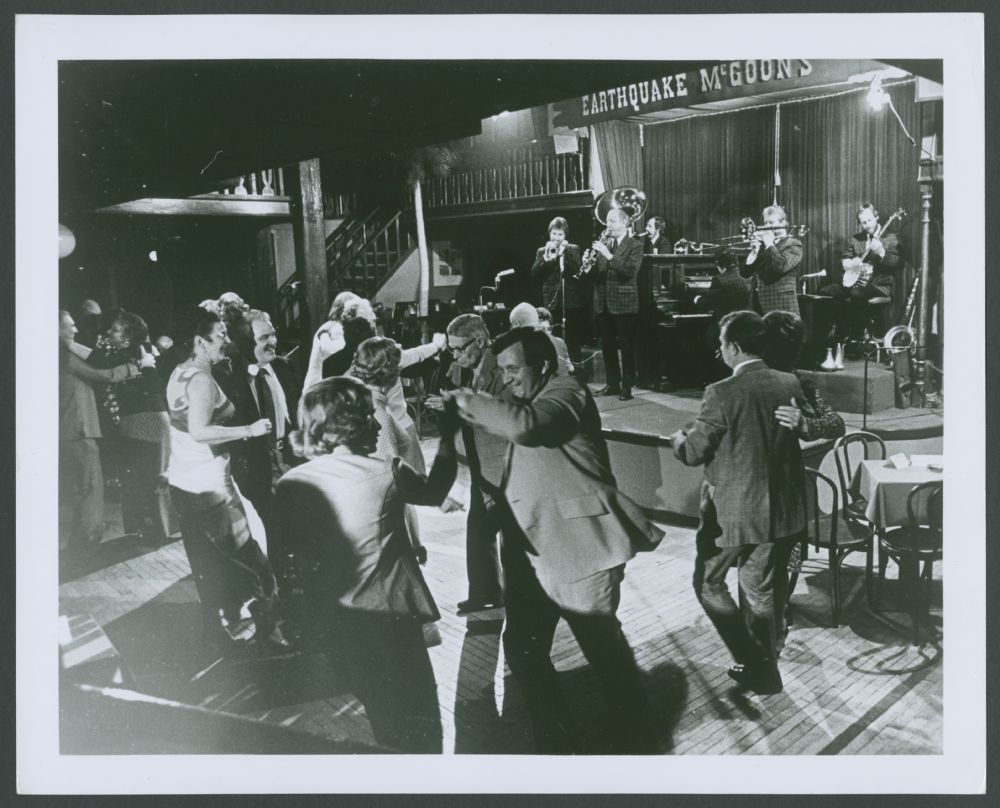
Dancers at Earthquake McGoon’s, 1973
“Intermissions at McGoon’s ran the gamut from solo pianists and singing banjoists to an all-star trio with Darnell Howard on clarinet/violin, Elmer Snowden on banjo, and Pops Foster on bass. One of the most beloved intermission artists was Clancy Hayes. A total professional with a sense of timing that nearly matched Turk’s, Clancy would always end his intermission act with a song from the Dawn Club/Hambone Kelly’s era as the Murphy band joined him onstage, one by one.”

Clancy Hayes
Earthquake McGoon’s served as a pinnacle of San Francisco’s Great Jazz Revival. The music that was being played for decades became part of the city, part of the culture, part of the people. The history and the legacy of the music came alive through the people who played it and enjoyed it. And now that legacy lives on in the carefully preserved and timelessly stored relics of San Francisco’s past, all accessible indefinitely on Stanford’s Online Exhibit.
“McGoon’s was an ideal jazz club. Turk made it into a beautiful jazz club. We had a very strong crowd, and they all became friends; everybody knew each other and they danced. There were so many great moments just watching the crowd enjoy the music.”
– Leon Oakley, Turk Murphy Jazz Band Cornetist.
Gone Tomorrow?
Musings on Permanence/Impermanence
In a nation often characterized by its frontier past, the zest for the Now has always contended with its opposite: the urge to constellate older, permanent values. Centuries of the wide open West brought us the enduring myth of cowboy who roamed freely across open spaces but whose assignment was often to save a threatened town. Trappers, miners and farmers kept moving on to the next big thing. Less romanticized, other farmers and their town-dwelling cousins put down roots, planting for permanence.
Today the theme lives on in other forms, such as in the struggle between development and preservation. Or between the risks of global thinking and the reassurances of old-time religion. Universally, man struggles for immortality against his evident mortality.
My first two books – Ghost Towns of the West and Middle West Country – probed America’s frontier tensions in detail. My most recent one, Causes and Spirits, is a photographic art book of worldwide scope; yet it, too, explores the contest between “dust to dust” on the one hand, and surpassing vision on the other. Threaded through the book in varying dimensions, the underlying polarity can be summed up here in two images involving the widespread deployment of Greek classical architecture. References to a shared European ancestry and taste, such structures served as emblems of a hoped-for permanence as America unfurled its banner westward.
Some dreams were broken. Some dreams survived.
Copyright statement: William Carter papers, © Stanford University Libraries. Click here for a detailed usage guide.
Those Teens Part 8
With the present series of posts. I bring together photographs made from 1958 to 2014 — 56 years — highlighting teenagers from cultures worldwide. Where it is sometimes not obvious if someone is technically a teen, or a bit younger or older, I have opted to be inclusive.
Wide differences of time and place, class and society are obvious in this series. More and more, though, my way of seeing has been to look past the external differences — toward the humanity, the soul that unites.
Copyright statement: William Carter papers, © Stanford University Libraries. Click here for a detailed usage guide.
THEN AS NOW?
When I saw the online New York Times piece this morning (above), October 28, 2018, featuring the stunning Yemen photographs by Tyler Hicks, my aching heart made me want to do something: then the heart messaged the brain that 54 years ago I had gone, as a young photojournalist, to a little-known, impoverished war zone called Yemen. This was at the invitation of a veteran New York Times Middle East Bureau Chief named Dana Adams Schmidt. An under-publicized, savage, tribal civil war was going on. One side was sponsored by Egypt, its arms supplied by the Soviet Union; the other side was supplied by Saudi Arabia, with its plentiful supply of American arms (sound familiar?).
Although Dana and I were unable to reach the combat zone, unsubstantiated rumors were circulating that the U.S.-made fighter jets were raining down a fairly new, horrifying kind of chemical weapon called napalm on the northern Yemeni tribesmen. (Before long napalm would become well known to the American public due to its widespread use in Vietnam.) A few weeks after our New York Times-based visit, a colleague, correspondent Dick Beeston of the London Daily Telegraph, nearly got himself killed traveling to northern Yemen where he searched for, and eventually found, and carried home, a piece of shrapnel quickly identified by experts as part of an American-made napalm shell.
 Then as now, bigger stories tended to eclipse U.S. public awareness of such “far-away” events. (Such as the huge, illicit, worldwide shipments of black market arms brokered by a prominent Saudi billionaire coincidentally (?) named Adnan Khashoggi).
Then as now, bigger stories tended to eclipse U.S. public awareness of such “far-away” events. (Such as the huge, illicit, worldwide shipments of black market arms brokered by a prominent Saudi billionaire coincidentally (?) named Adnan Khashoggi).
How far away is all this from Hicks’ digital color masterpieces of the wrinkled bodies and dying faces half a century later? Too far? Or not far enough? In my ongoing series,I have already shared some of my 1964 Yemen Kodachromes with you. Here’s one from that same journey, borrowed from my most recent blog on children. Is the black and white imagery outdated? I hope not.
Those Teens Part 7
With the present series of posts. I bring together photographs made from 1958 to 2014 — 56 years — highlighting teenagers from cultures worldwide. Where it is sometimes not obvious if someone is technically a teen, or a bit younger or older, I have opted to be inclusive.
Wide differences of time and place, class and society are obvious in this series. More and more, though, my way of seeing has been to look past the external differences — toward the humanity, the soul that unites.
Copyright statement: William Carter papers, © Stanford University Libraries. Click here for a detailed usage guide.
Those Teens Part 6
With the present series of posts. I bring together photographs made from 1958 to 2014 — 56 years — highlighting teenagers from cultures worldwide. Where it is sometimes not obvious if someone is technically a teen, or a bit younger or older, I have opted to be inclusive.
Wide differences of time and place, class and society are obvious in this series. More and more, though, my way of seeing has been to look past the external differences — toward the humanity, the soul that unites.
Copyright statement: William Carter papers, © Stanford University Libraries. Click here for a detailed usage guide.
Those Teens Part 5
With the present series of posts. I bring together photographs made from 1958 to 2014 — 56 years — highlighting teenagers from cultures worldwide. Where it is sometimes not obvious if someone is technically a teen, or a bit younger or older, I have opted to be inclusive.
Wide differences of time and place, class and society are obvious in this series. More and more, though, my way of seeing has been to look past the external differences — toward the humanity, the soul that unites.
Copyright statement: William Carter papers, © Stanford University Libraries. Click here for a detailed usage guide.
Those Teens Part 4
With the present series of posts. I bring together photographs made from 1958 to 2014 — 56 years — highlighting teenagers from cultures worldwide. Where it is sometimes not obvious if someone is technically a teen, or a bit younger or older, I have opted to be inclusive.
Wide differences of time and place, class and society are obvious in this series. More and more, though, my way of seeing has been to look past the external differences — toward the humanity, the soul that unites.
Copyright statement: William Carter papers, © Stanford University Libraries. Click here for a detailed usage guide.
Those Teens Part 3
With the present series of posts. I bring together photographs made from 1958 to 2014 — 56 years — highlighting teenagers from cultures worldwide. Where it is sometimes not obvious if someone is technically a teen, or a bit younger or older, I have opted to be inclusive.
Wide differences of time and place, class and society are obvious in this series. More and more, though, my way of seeing has been to look past the external differences — toward the humanity, the soul that unites.
Copyright statement: William Carter papers, © Stanford University Libraries. Click here for a detailed usage guide.
Those Teens Part 2
With the present series of posts. I bring together photographs made from 1958 to 2014 — 56 years — highlighting teenagers from cultures worldwide. Where it is sometimes not obvious if someone is technically a teen, or a bit younger or older, I have opted to be inclusive.
Wide differences of time and place, class and society are obvious in this series. More and more, though, my way of seeing has been to look past the external differences — toward the humanity, the soul that unites.
California, c. 2012
Copyright statement: William Carter papers, © Stanford University Libraries. Click here for a detailed usage guide.
Those Teens Part 1
With the present series of posts. I bring together photographs made from 1958 to 2014 — 56 years — highlighting teenagers from cultures worldwide. Where it is sometimes not obvious if someone is technically a teen, or a bit younger or older, I have opted to be inclusive.
Wide differences of time and place, class and society are obvious in this series. More and more, though, my way of seeing has been to look past the external differences — toward the humanity, the soul that unites.
California, c. 2012
Lebanon, c. 1965
Lebanon, c. 1965
Indiana, c. 1972
Syria, c. 1964
Lebanon, c. 1965
Iraq, c. 1965
California, c. 2014
Copyright statement: William Carter papers, © Stanford University Libraries. Click here for a detailed usage guide.
More Color from Florida
From 2014, and also from 2007
The top two, below, are additional pictures taken from the Everglades boardwalks in February, 2014.
Plus, below those two, are five more abstract photographs (numbered 3-7) taken during our only previous visit to Florida’s wild places — in February, 2007, when we got our feet wet trudging through swamplands near the Gulf Coast.
All photographs © William Carter
Copyright statement: William Carter papers, © Stanford University Libraries. Click here for a detailed usage guide.
Thanks, Teddy
Thanks for the Everglades
Having been preoccupied with other projects, I haven’t posted any new blogs for awhile. But here is a new one, signaling resumption of my blog series.
The photographs below are from our visit to the Florida Everglades in February, 2014. With thanks to Teddy Roosevelt for having established America’s National Parks system, which preserves this and other wilderness treasures.
All photographs © William Carter 2014
Copyright statement: William Carter papers, © Stanford University Libraries. Click here for a detailed usage guide.
The Kit Kat Club
Google Announces New/Old Name for its Operating System
———————————————by William Carter————————————————————–
Every city has its seamy side. More so, perhaps, ancient Mediterranean ports long accustomed to serving a variety of visitors — from circulating sailors, to Saudi sheiks, to sun-seekers, to sidewalk speculators.
When Google announced “KitKat” as the name for the latest version of its Android operating system, I thought both of the Nestlé candy bar and of a formerly well-known Beirut strip joint. That bustling city has always attracted a large supply of entertainers — featuring European blondes — to work at every level, from the posh Casino du Liban, on down.
The Kit Kat Club was on the waterfront not far from where I lived from 1964 to 1966. I photographed dancers there, and later in their apartments, as part of a wider magazine story — “Women of Beirut” — a multi-leveled portrait of this tribal/sophisticated city which I never got around to finishing.
The bottom image. below, shows a larger, seamier section of town which appeared to feature brunettes.
A year later came the 1967 Arab-Israeli War, followed by Lebanon’s long, brutal internal conflicts — but by then I was gone.
Fast forwarding 47 years, on November 6, 2013 I was heartened to note this passage by Walter Mossberg in the Wall Street Journal: “While the primary goal of KitKat was to run in a much smaller amount of memory, it has a few notable new features. The phone app now places recent and frequent callers first in its favorite call list and de-emphasizes the full list of contacts…”
photographs © William Carter 1966
Copyright statement: William Carter papers, © Stanford University Libraries. Click here for a detailed usage guide.
More on Egypt, Mother of the World
BELOW: Checking the View: Supreme Egyptian Military Headquarters, Heliopolis (Cairo):
BELOW: “Meanwhile, the rich get…”: U.S.-favored former Tunisian ruler Habib Bourguiba, 1965.
All of above photographs © William Carter. Below photographs uncredited, via William Carter courtesy Camera Press (London).
Meanwhile, fundamentalists of every stripe have always liked to impress with “shock and awe”:
Copyright statement: William Carter papers, © Stanford University Libraries. Click here for a detailed usage guide.
Egypt, Mother of of the World
I landed in Beirut in 1964 knowing nothing of the region. I was there to represent a New York photo agency — when such outfits had their people stationed around the world doing photojournalistic assignments.
One of the first people I met was the New York Times’ Middle East bureau chief, Dana Adams Schmidt. A seasoned writer, he was just leaving for Egypt, Yemen, South Arabia and Yemen: did I want to go with him? I jumped at the chance.
In Cairo I accompanied Dana on some of his political interviews. Nasser was in power trumpeting his anti-colonialist, pro-socialist, Arab-nationalist agenda. Since time immemorial the Egyptians, with their proud history, had considered themselves the cultural and political leaders of the Arab community.
The term for this outlook was — and is — Masr, Um al-Dunia: “Egypt, mother of the world.”
I had time to explore the teeming, wonderful streets. The following year I would return to the Nile Delta photographing for a UN agricultural development agency. The country’s problems were deep — seemingly intractable — yet the faces were joyous. I can only hope some of that spirit survives the latest crisis. Half a century seems less long inside a seedbed of civilization.
All photos © William Carter 1965

Copyright statement: William Carter papers, © Stanford University Libraries. Click here for a detailed usage guide.
Yemen: Then as Now? Part 4
Photos and Text © William Carter
 Many Yemenis are short, and their donkeys more so
Many Yemenis are short, and their donkeys more so Protecting himself from the sun with a vestige of British colonial times
Protecting himself from the sun with a vestige of British colonial times The hot, humid valleys north of Sanaa are rich in agriculture — and malaria
The hot, humid valleys north of Sanaa are rich in agriculture — and malaria
 Yemen’s indigenous architecture long contributed to its reputation as a quasi-mythical land
Yemen’s indigenous architecture long contributed to its reputation as a quasi-mythical land
 In 1963 the Brits still hung on
In 1963 the Brits still hung on
 Late in the day a colonial officer reviews a dwindling number of troops
Late in the day a colonial officer reviews a dwindling number of troops
 Street life in Aden survived longer than the politicians on the walls
Street life in Aden survived longer than the politicians on the walls
 Building for an uncertain future — then as now
Building for an uncertain future — then as now
Copyright statement: William Carter papers, © Stanford University Libraries. Click here for a detailed usage guide.
Yemen: Then As Now? Part 3
Where there are children, there is hope
Photos and Text © William Carter
 In 1964 we were told these were the first girls who ever went to school in Yemen; those who survived would now be nearly 60 years old
In 1964 we were told these were the first girls who ever went to school in Yemen; those who survived would now be nearly 60 years old
 Building sites can also be fun
Building sites can also be fun
 In traditional societies, gender-defined roles start early
In traditional societies, gender-defined roles start early
 Too old to be in the first school for girls?
Too old to be in the first school for girls?
 Was this his first view of a camera viewing him?
Was this his first view of a camera viewing him?
Copyright statement: William Carter papers, © Stanford University Libraries. Click here for a detailed usage guide.
Yemen: Then As Now? Part 2
Photographs by William Carter © 1964
 Tribal representatives pleading with Egyptian “anti-colonial” troops
Tribal representatives pleading with Egyptian “anti-colonial” troops
 Heading north, where Egyptian-backed revolutionaries were fighting Saudi-backed royalists
Heading north, where Egyptian-backed revolutionaries were fighting Saudi-backed royalists
 View from a British helicopter
View from a British helicopter
 Outpost in South Yemen: note man in prayer on wall
Outpost in South Yemen: note man in prayer on wall
 Traders in the southern port of Aden
Traders in the southern port of Aden
Copyright statement: William Carter papers, © Stanford University Libraries. Click here for a detailed usage guide.
Yemen: Then as Now?
Photographs and Text © William Carter Tribal elder near Sanaa, Yemen during the 1964 civil war. He carries a sprig of “ghat,” the mild national narcotic, in his hat
Tribal elder near Sanaa, Yemen during the 1964 civil war. He carries a sprig of “ghat,” the mild national narcotic, in his hat
When Condoleezza Rice popped up in Cairo a few years ago to lecture the pharaohs that she and the other neocons were going to bring democracy to the Middle East, I had to laugh. It was redolent of the U.S. promising, a century earlier, to “make the world safe for democracy.” More distantly, I was reminded of the “enlightened self-interest” pronouncements of the colonial centuries. I was in Yemen and Aden in 1964 when the Brits were withdrawing none-too-gracefully from the last vestiges of their empire “east of Suez.” Reading the sad news of today’s Yemen, I am checking my files for photographs I took that fall in the company of my colleague, the New York Times’ Dana Adams Schmidt.
 Chinese laborer, Yemen 1964: the Americans, the Soviets, and the Chinese raced to win hearts and minds in a road building competition while the Egyptians and Saudis sponsored a proxy war of factions that included the use of napalm
Chinese laborer, Yemen 1964: the Americans, the Soviets, and the Chinese raced to win hearts and minds in a road building competition while the Egyptians and Saudis sponsored a proxy war of factions that included the use of napalm
After flying by Egyptian military plane from Cairo to Sanaa, we slept for a few days in a mud brick skyscraper. I sampled “ghat” (the local mild narcotic), and we interviewed Yemen’s Egypt-friendly President and other local officials. We traveled north to the medieval town of Saada, close to a civil war then raging between the Royalists (backed by royal Saudi Arabia) and the Republicans (backed by Nasser’s Egypt). Sound familiar today? In the nearby town of Taiz we interviewed an American foreign aid official who explained that the U.S. and the Russians were competing for influence in the country by building major roads, sending in Caterpillars from Peoria and asphalt from some Soviet province; even the Chinese were already in that game, shipping in laborers with picks and shovels. We also interviewed a British official who knew far more about the tribes and sub-tribes than the Americans ever would, because the Brits had been there so long and taken a deeper interest in the native culture.
 Then as now, the ultimate victims were the children
Then as now, the ultimate victims were the children
Next came the toughest road journey of my life. In a vintage Land Rover we bumped and slid over hundreds of miles of nearly trackless dessert, south toward Aden, past some of the most destitute, disease-ridden villages in the world, stopping a few of times in this region then called “South Arabia” to overnight with jaunty British troops and cheerful colonial administrators, enabling Dana to fill up his notebook with more quotes and me to take more pictures. Aden was a depressing, dangerous place in the throes of a Marxist sub-revolution; a cafe we had sat in an hour earlier was hit by a terrorist bomb. Most interesting (and quaint, now): we visited polling stations where British colonial officials, as prelude to their withdrawal from this final outpost of empire, were staging elections: fair, square, and meaningless.
 In the strategic port of Aden, the British were preparing to depart from a last vestige of Empire by holding an election
In the strategic port of Aden, the British were preparing to depart from a last vestige of Empire by holding an election
All this was a long way from palm-fronded LA where I had grown up. But I shipped the uncensored shoot to New York by air freight (with the requisite bribe to the Beirut Pan Am agent). That was the start of my career as a photojournalist based in Lebanon. Eventually I got most of the filmstrips and slides back, but that was half a century ago, and I’m still looking for more of them to scan. I now see that even at that early stage (I had only taught myself photography 3 years earlier), I was more of a sucker for humanity than for the hard violence needed to sell news to a civilized society then preoccupied with race riots and Vietnam.
Copyright statement: William Carter papers, © Stanford University Libraries. Click here for a detailed usage guide.
The Tones of Stones
Sometimes, in our wanderings across the landscape of ancient Syria, Jordan, Lebanon, Iraq, and elsewhere in the eastern Mediterranean, my wife Ulla and I would stumble into a silent, ancient amphitheater. Persuaded to try my clarinet in that dry air, I’d soon be assured that even the softest tones carried well into the high rows.
Ulla and I treasure such sweet memories. But now they are jarred with bitter undertones — endless war, brutal destruction at such magnificent sites as Palmyra.
Below, our sentimental snaps of twenty years ago have an implicit simplicity, a clarity of tone hard to recall today.
Copyright statement: William Carter papers, © Stanford University Libraries. Click here for a detailed usage guide.
Contested Stones redux
Too late — again?
As a sad update to my recent “Contested Stones” blog, events continue to unfold in the Middle East. Under the headline “Saving Syria,” the Wall Street Journal notes that, amid that nation’s current civil war, poorly guarded monuments of immense historical importance, including the medieval Crac des Chevaliers and the Roman ruins of Palmyra, are starting to be degraded by looters and damaged by modern weaponry. Below the link to the WSJ story is one of my photographs of Palmyra, in the eastern Syrian desert. (Recall that Iraq suffered other important archaeological losses which occurred during the American invasion.)
Please read “Saving Syria,” by Christian Sahner in the Wall Street Journal, August 23, 2012.
“Watch any mother kneeling beside her toddler, pointing and explaining what they are looking at. Our urge to see, to comprehend and connect, starts there.”
That’s how I put it in the opening text of my Causes and Spirits.
Received culture profoundly affects how we see the world. Including how we view it through our cameras.
Nowhere is this more evident than in the “Holy Land” fought over for thousands of years by followers of the three Abrahamic religions, plus such secular claimants as the Romans, the Turks, and the British.
When I was living in Beirut 1964-1966, much of Jerusalem and the territory around Bethlehem were controlled by a classic buffer state — the Kingdom of Jordan. On two successive Decembers I was sent by an American magazine to photograph Christmas in Bethlehem. None of those pictures survive, because the magazine was buying full rights, including the films themselves. But I retain strong memories of the tumult swirling within and without the Church of the Holy Sepulcher. Monks of various traditions were physically fighting for jurisdiction over this and that section of holy stones at this and that hour. The surrounding city bubbled with the sorts of strife to which the region has always been heir, and to which the Israelis would soon contribute. Seasoned observers would continue to watch these underlying tensions weave threads of irony into all the heartfelt salaams and shaloms of the private greetings, public blessings and international agreements.
But I did my gig: I sent the Midwestern magazine what I was sure they wanted: warm, candlelit faces of Protestant pilgrims processioning past the ancient, contested stones.
Where and when to cut slices of space and time with the bright-line frame of my Leica was never obvious. I reflected, sometimes, on earlier generations of foreign photographers of the Middle East: of the dreamy harem scenes, for instance, always included in the sets of stereopticon slides sent back to reinforce colonial stereotypes in London drawing rooms — some of those same drawing rooms where ruler lines were then being traced across the maps of Arab sands creating nation-states where none had existed before – thus helping set up the kinds of tribal quarrels the world still struggles to contain.
Working far from home, journalists can face ethical dilemmas that are personal and immediate, as well as professional. Covering the Korean War in the 1950s, a journalist I knew watched an American TV crew stop a farm family from putting out the fire engulfing their shelled house until the cameraman got great footage of the licking flames.
At one point I faced a dilemma while traveling for Life Magazine with the Kurdish guerrilla fighters across northern Iraq. My main contact was an intelligent, helpful, English-speaking former Iraqi army officer named Colonel Akrawi. Huddled by a lantern one night, noticing I hadn’t gotten any combat shots, he moved closer, tapped on a map and whispered, “At the bottom of these hills, in the flat desert north of Suleimaniya, there’s a small Iraqi police post. Half a dozen of them sleep there every night. Next Tuesday is full moon. So if you want, we can raid the place and kill all the policemen – and you’ll can get great pictures! Okay?”
He was leaving it up to me. His offer was laden with the warmth and generosity of traditional guest-honoring, plus a dose of macho that included me as co-conspirator in their revolution. How to reply? The pictures sounded tempting. But to get them, I would, in effect, be sponsoring a few murders. And, I would be creating some news in order to report it – not exactly what photojournalists are supposed to do. As the lantern light flickered over our faces, I thanked the colonel, but explained that for that job I would have needed a flash, and mine was broken. The gentlemanly Kurd nodded and accepted this. I photographed Akrawi and his aides, conferring in the orange lantern light well into the night. Days later I photographed him shaving. Then we marched west for several nights to the mountain passes above the oilfields of Kirkuk. Under shellfire the colonel handed me his binoculars, pointed, and declared, “That oil is ours!” Today, sixty years later, the Kurds are negotiating to sell that oil direct to major American producers without bothering to ask permission from Baghdad.
A year or two after my visit, word reached me Colonel Akrawi had been badly wounded in battle. Eventually, I was told he had died. An amateur botanist, he had showed me a scrapbook he toted around, into which he pressed samples of plants peculiar to the Kurdish region of Iraq, Iran, Turkey and Syria. Whatever happened to that lovely notebook, with its unique specimens? In Paris, much later, I visited the Kurdish Institute and asked about Akrawi: they remembered him well — but not his collection.
In the late 1970s I was sitting on the cool tiles of a crowded courtyard near Bombay, listening to a talk by spiritual master Swami Muktananda when he remarked, as if casually, “One sees the world as one is.”
Copyright statement: William Carter papers, © Stanford University Libraries. Click here for a detailed usage guide.
The World’s Century
American Exceptionalism is Dead
By 1945 the U.S. had emerged indisputably as the world’s strongest nation, physically and financially. War spending had helped end the Depression. The country had been spared the devastation of once-dominant Europe and its far-flung colonial system. The booming 1950s reinforced America’s underlying faith in its own moral and political underpinnings. Goaded by the worldwide challenge of communism, this “first new nation” set out to teach the “third” or “underdeveloped” world, by soft and hard power alike, the benefits of the American way. Behind this effort was a longstanding set of internal attitudes and assumptions that historians would dub “American exceptionalism.”
During the second half of this “American Century” the U.S. became involved in proxy wars in places such as Korea, Vietnam, the Middle East and Latin America. The results of these conflicts were often, at best, indeterminate. Far more successful, below the radar, were America’s exports of knowledge-based, open-lifestyle aspects of its consumer-based civilization: science and education, manufacturing and retail, mass communications and entertainment. Enlightened self-interest assumed that a rising tide of living standards worldwide (across oceans policed by the U.S. Navy) would lift all boats. Public and private agencies poured massive resources into helping the world imbibe Progress.
But by the year 2000 the success of this “soft power” transfer had produced unforeseen consequences. Populous and increasingly prosperous non-western civilizations, having acquired industrial and economic modernization, were now reconfiguring their societies in ways not necessarily predicted or understood by their western mentors.
Worldwide economic relationships were increasingly interconnected and interrelated. Low-cost Asian labor was as much a fact of life in Berlin or Los Angeles or Mexico as were the inventions of Apple or Caterpillar or Boeing in Mumbai or Sydney or Cairo. No one anywhere could any longer claim a monopoly on righteousness, pornography, or nuclear fusion. Provincial U.S. politicians might still try to pander to the hustings with sentimental yearnings; but the greater world knew that the idea of “American exceptionalism” was now as last-century as “the American Century” itself.
Copyright statement: William Carter papers, © Stanford University Libraries. Click here for a detailed usage guide.
Moments in Mirrors
My wanderings through the canyons and parks of New York often began or ended in Washington Square, at the foot of Fifth Avenue. I never tired of joining the onlookers at the serious chess games going on there day and night. Occasionally one could spot someone like this guy who appeared to have privately cracked the code on the game of chess (or life for that matter). New Yorkers seem to have evolved ways of being at once entirely public and intensely private.
Later, I shook hands briefly with a famous photographer of an earlier era, Andre Kertesz, who was living on an upper floor of a tall apartment house on Washington Square, right above my head. Some of his pictures were taken in fun zone mirrors, others from his window looking down on the Square. I fantasized that at the moment I was taking the picture above, Andre could have been taking a picture of me taking pictures of the “chessmen.” Remembering that thought makes me laugh like the man in my picture.
Copyright statement: William Carter papers, © Stanford University Libraries. Click here for a detailed usage guide.
Jazz Emerges Part 7
Sing Miller: This Little Light of Mine
Visible Roots of America’s Most Original Cultural Product
Photographs by William Carter 1970 — 1989
Born in 1914, pianist-vocalist Sing Miller was active on the New Orleans scene from the late 1920s until his death in 1990. If Sing didn’t like something, he’d let you know. “Man…that ball don’t bounce,” is a Sing-saying drummer Jeff Hamilton remembers.
Early one winter morning in Iowa in 1984, when I was traveling as a photojournalist with the Percy Humphrey band, Sing sat alone in the lobby for most of an hour, staring glumly out at the blustery weather. Finally he lumbered over and checked out. “Have a nice day,” said the lady at the desk. Sing: “How I’m gonna have a nice day when you took all my money?”
But he was also a bon vivant. When a reporter asked him, “Where did the blues begin?” Sing replied, “I’ll tell you where the blues begin. Blues begin with fish fries.”
Like many early New Orleans musicians, he had an alternate profession: as a paving contractor. On gigs he gave out business cards that read, “Let me pave the way for you.”
But Sing is best remembered for captivating audiences of five, or five thousand, with his vocals on blues and spirituals. After a performance one night at New York’s prestigious Lincoln Center, the famous folklorist Alan Lomax told me:
“The first note he sang, I began to cry. That first note of Sing’s made me burst into tears. This little, humble, crushed-looking man was in great big Avery Fisher Hall, and he knew it. And the first note he formed was as beautiful as a garden of flowers. It was a sunburst of the soul.”
CLICK HERE TO HEAR SING DOING “SING’S BLUES” WITH WILLIE HUMPHREY AND OTHERS AT PRESERVATION HALL.
CLICK HERE TO HEAR SING DOING “AMEN” ON TOUR WITH THE PRESERVATION HALL JAZZ BAND.
Copyright statement: William Carter papers, © Stanford University Libraries. Click here for a detailed usage guide.
Jazz Emerges Part 6
Visible Roots of America’s Most Original Cultural Product
The Basses of Our Music
Photographs by William Carter, 1971-1985
Above: listen to bassist Pops Foster with the Luis Russell Orchestra from 1929, “Jersey Lightning.” Also on this record are New Orleans men Henry “Red” Allen, Albert Nicholas and Paul Barbarin. Virtually all of the New Orleans bass players depicted in this post played in an energetic, percussive style very similar to Foster’s.

FUNDAMENTAL: Historians and scholars have long believed the world’s first jazz band to have been that of Buddy Bolden, whose powerful cornet was heard from the bandstands of city parks and dance halls across New Orleans in the early years of the twentieth century. The only member of the Bolden band known to have survived into the 1960s was bassist Papa John Joseph, shown above in an upstairs room at Associated Artists gallery, which morphed into Preservation Hall. Joseph played concert sets downstairs until 1965, when, at 87, he collapsed and died seconds after performing When the Saints Go Marching In. Photograph by Bobby Coke, early 1960s

IN PERPETUAL DEMAND around New Orleans, and on numerous road trips across the U.S. and Europe, muscular bassist Chester Zardis (1900-1990) employed a powerful style that belied his physical shortness of stature and earned him the nickname “Little Bear.” In the post-World War II years, younger proteges flocked to hear and meet early New Orleans masters like Zardis. Thus was a once-obscure, pre-electronic bass plucking technique revived and carried forward across generations and over continents.
Photograph by William Carter, 1984

NEW ORLEANS BASS STYLIST Wellman Braud (1891-1966) reached the top of his profession as a
mainstay with Duke Ellington, plus many other engagements. Like a number of the classic jazzmen, Braud descended from a Creole musical family — several of whom, such as his cousin, bassist McNeil
Breaux, used an alternate spelling of the French-derived last name. Like many another jazz pioneer,
Wellman eventually settled in California, accepting gigs such as with blues singer Barbara Dane. Photograph by William Carter, c. 1960

FAMOUS BASSIST Pops Foster (lower right), 1892-1969, was already playing professionally in New Orleans by 1907. Amid a busy career of touring and gigging with top jazz names, he lived mainly in New York and (eventually) San Francisco. He is shown here (bottom right) in a photo from his own collection with an all-star band that included New Orleans natives Alvin Alcorn (trumpet, center) and Cie Frazier (drums, top right). Photograph: San Francisco Traditional Jazz Foundation Collection, Archive of Recorded Sound, Stanford University (date unknown)
Listen to bassist Pops Foster on “Ostrich Walk” with Mutt Carey’s band
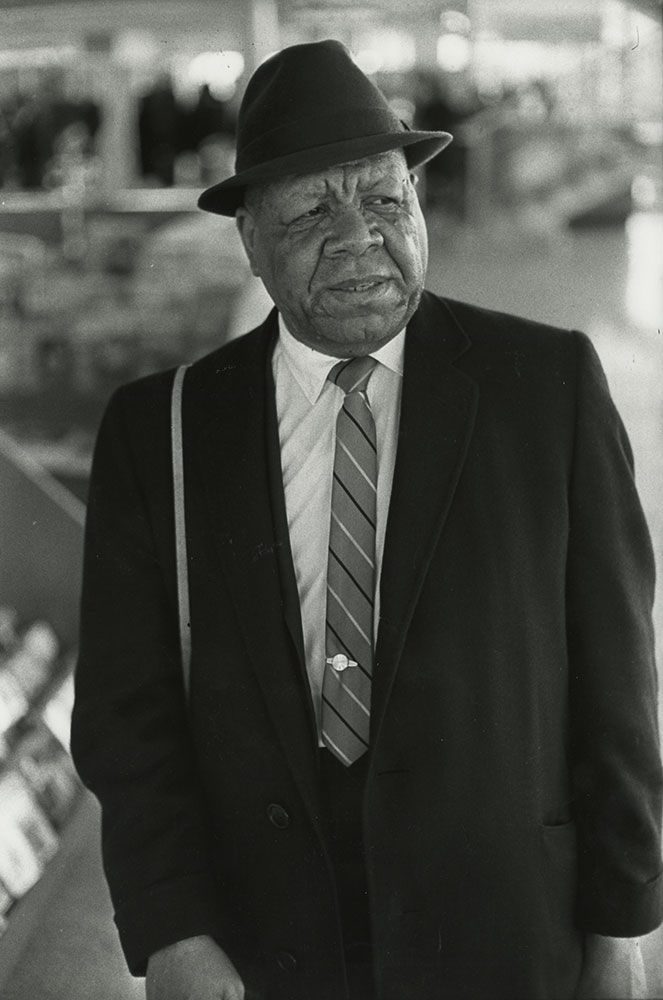
TALENTED SON of bandleader Henry Allen, trumpeter Henry Red Allen (1906-1967) played extensively in New Orleans, on the Mississippi riverboats and in Chicago before settling in New York, where he was featured as soloist and sideman with top jazz orchestras of the 1920s, 1930s, and 1940s including those of Luis Russell, Fats Waller, Fletcher Henderson and Eddie Condon — besides leading several of his own bands. Photograph by William Carter, 1964

UNDISPUTED EMPEROR OF TRADITIONAL JAZZ, Louis Armstrong (1901-1971) enjoyed a career too spectacular to summarize. While occupying center stage in America’s mainstream musical culture for virtually half a century, in his music and in his words Satchmo never ceased to recall, with great affection, his formative New Orleans years as a streetwise orphan and fledgling brass band cornetist. Photographs by William Carter, 1962
Copyright statement: William Carter papers, © Stanford University Libraries. Click here for a detailed usage guide.
Jazz Emerges Part 5
Visible Roots of America’s Most Original Cultural Product
Preservation Hall Won Hearts Across U.S.
Photographs by William Carter, 1971-1985
Copyright statement: William Carter papers, © Stanford University Libraries. Click here for a detailed usage guide.
Jazz Emerges Part 4
Trumpeter Percy and Clarinetist Willie Humphrey
On Tour and At Home
Visible Roots of America’s Most Original Cultural Product
Photographs by William Carter 1973-1985

Birthday party with kin folk and friends after a gig in California in 1976; musicians included the Humphrey brothers (center), drummer Cie Frazier (behind Percy), and banjoist/singer Narvin Kimball (seated).
In a long caption in my book, Preservation Hall (W.W. Norton, 1991), I told the story, quoted below, of the Humphreys’ long lives and distinguished lineage. I never met their trombonist brother, Earl, who died relatively young. Their father, Willie Humphrey Sr., was a clarinetist who spent much of his life on road tours; in a surviving publicity shot he looks just like Willie Jr. The pioneering grandfather’s story says something about the rich artistic and cultural complexities underpinning the birth of what has been called “America’s classical music”:
“The work of the front-line Humphrey triumvirate stemmed from the teaching of their grandfather, James Brown Humphrey, who played a unique role in the earliest years of jazz. That “fair-skinned Negro with red hair,” as the authors Berry, Foose and Jones told it, in Up from the Cradle of Jazz (1986), “starting about 1887, boarded the train each week, wearing a swallow-tailed coat and carrying a cornet case and music sheets in a satchel. The professor had many New Orleans pupils who entered the ranks of early jazz; he is also said to have taught whites. Most students on his weekly tour of the plantation belt — 25 miles either way from the city — were illiterate workers who lived in shacks behind the sugar and cotton fields along the river…Humphrey by 1890 was a rare commodity, a black man who lived off his talents as an artist. He played all instruments, directed bands and orchestras, and became a catalyst sending rural blacks into urban jazz ensembles.”
The essence of classic New Orleans jazz is the ensemble. The essence of that essence is a tough, growling, cut-down, loose-limbed, abbreviated lead trumpet or cornet — allowing the other horns lots of space. Trumpeter Percy Humphrey gives us a fiery taste of his lead in the excerpts below.”Running Wild” and “Panama” were recorded in Oxford, Ohio by the great George Lewis Ragtime Band of 1952.
Click below to listen to segments of “Runnin’ Wild” and “Panama.”
In the following solo on “St. Louis Blues,” clarinetist Willie Humphrey demonstrates two cardinal components of the New Orleans style.
Rhythmically, the horns and piano never cease to play off of, and around, the beat as strictly laid down by the rhythm section. Attacking microseconds before or after what would be correct in a more European or “white” reading, this constant off-beatness serves to trip up the listener. “What’s your music for? Mine’s for dancing!” exulted a classic player. Making people move their bodies out on the streets and in the dance halls is the musicians’ fundamental assignment — which extends to foot tapping in concert halls. Syncopation is key.
Structurally, Willie gradually, logically builds his variations from lower to higher pitches and intensities. Employing St. Louis Blues-derived themes and a faux-stumbling manner that helps release micro-rhythms, he gradually weaves a baroque edifice soaring above the underlying foundation.
Click below to listen to “St. Louis Blues.”
Copyright statement: William Carter papers, © Stanford University Libraries. Click here for a detailed usage guide.
Signs of the Times
America’s Corn Belt Speaks for Itself
Digging deep in my files as part of an ongoing effort to gather a legacy of vintage prints, I stumbled on some unpublished treasures. Forty years ago I photographed these signs along the back roads of Indiana, Illinois and neighboring states while working on my second book, Middle West Country (Houghton Mifflin, 1975).
Now the signs are mostly gone — but not the inherent modesty, chuckling humor, and serious spirit of America’s heartland.
Photographs © William Carter 1972, 2010
Copyright statement: William Carter papers, © Stanford University Libraries. Click here for a detailed usage guide.
The Old Glory That Was Kodachrome
70 Brilliant Years
How great it was — while it lasted, until 2012 — something like 70 years.
It still lasts archivally: those chromes retain their slightly salmon, yet accurate, saturated colors while so many others have long since faded. The film of choice for top magazines, many folks’ travel slides, and countless other applications. This post features some of my Kodachrome slides of the western U.S. from the 1960s on. (We hope to present a few international Kodachromes later; then eventually a selection from that fine new medium — digital color.)
We are fortunate to be living through a major transition in the history of photography. Five centuries ago, Western art was revolutionized by the invention of oil painting. Artists old enough to have been trained in older techniques like tempera, but young enough to master oil — Venetians like Titian, for instance — combined both skills in highly creative ways. (See my earlier post, “Tone in Art — and in Life.”) So I’m always pleased to hear of today’s art schools continuing to teach the older “wet darkroom” alongside the newer digital technologies.
See also “Bound for Glory: America in Color,” Kodachromes by photographers of the Farm Security Administration/Office of War Information, property of the Library of Congress.
All Kodachromes © William Carter

Preservation Hall, New Orleans, circa 198

Preservation Hall, New Orleans, c. 1985

Preservation Hall, New Orleans, c. 1986
Copyright statement: William Carter papers, © Stanford University Libraries. Click here for a detailed usage guide.
The Middle Americans (Part 8)
Quiet Truths Near the Center of Our Lives
…prairie places..
Copyright statement: William Carter papers, © Stanford University Libraries. Click here for a detailed usage guide.
The Middle Americans (Part 7)
Quiet Truths Near the Center of Our Lives
…prairie people…
Copyright statement: William Carter papers, © Stanford University Libraries. Click here for a detailed usage guide.
The Middle Americans (Part 6)
Quiet Truths Near the Center of Our Lives
Copyright statement: William Carter papers, © Stanford University Libraries. Click here for a detailed usage guide.
The Middle Americans (Part 5)
Quiet Truths Near the Center of Our Lives
Copyright statement: William Carter papers, © Stanford University Libraries. Click here for a detailed usage guide.
The Middle Americans (Part 4)
Quiet Truths Near the Center of Our Lives
Copyright statement: William Carter papers, © Stanford University Libraries. Click here for a detailed usage guide.
The Middle Americans (Part 3)
Quiet Truths Near the Center of Our Lives
Copyright statement: William Carter papers, © Stanford University Libraries. Click here for a detailed usage guide.
The Middle Americans (Part 2)
Quiet Truths Near the Center of Our Lives
Copyright statement: William Carter papers, © Stanford University Libraries. Click here for a detailed usage guide.
The Middle Americans (Part 1)
Quiet Truths Near the Center of Our Lives
Beyond the glitz and shock, the checkout stands and game shows, there’s an American reality that doesn’t much change. This human landscape is actually a place in our heart.
I’ve picked about 50 images, few of which were previously published. They were taken in different parts of the U.S., in different decades, and printed in my darkroom. This collection is a series of postings to be released in coming weeks.
See also here my earlier blog post, National Character.
All Photographs © William Carter
Copyright statement: William Carter papers, © Stanford University Libraries. Click here for a detailed usage guide.
Inverness, California 2002
Please click on image for full-size version. To view more panoramic images, please visit this page on my website.
My wife Ulla and I were staying overnight with friends in Inverness, near the Pacific Coast in northern California. We were in their lovely new guesthouse in a lush garden and forest setting of coast redwoods. Waking early, I glanced out the window at a remarkable scene, like a fantasy, the way the rain had just stopped and light was filtering through the not-yet dissipated mist. Still in my pajamas, I grabbed my large Linhof panoramic camera, tripod, film, light meter and ran outside. I knew those conditions would not last, and I knew what the camera settings should be for that light. It was chilly but I was warm with sweat. I found the spot to set up but the ground was wet, so the tripod and I were both tending to sink in the mud. I had to stabilize the tripod, or wait for in between moments when it was not sinking, because to get infinite depth of field even with Tri-X film required exposures of 1/15 of a second or slower, which would blur the image if the camera moved. Meanwhile the light was changing, in and out, up and down, involving me in an intricate dance; just when it all came together and I pushed the cable release (gently to avoid causing movement), I heard Ulla open a window and in a bleary early voice asked what I thought I was doing out there in the cold and wet in my pajamas with mud all over me. I shouted something terse and dismissive. Finally I finished several exposures and the light was fading and I trudged back dripping mud and thinking of coffee and a shower and wondering what I or Ulla would do about my soaked pajamas.
One of the frames turned out great. I scanned it and printed it 30 inches wide on an Epson printer, have sold a couple of prints, and 9 years later used it on page 293 of my retrospective book, Causes and Spirits. Including it there was a late breaking decision because the book was mainly about people; altering the last chapter in order to include that and some other non-people images interrupted the printing cycle and caused the great publisher, Gerhard Steidl, to remain angry at me for about a year.
But the Linhof is still okay. Also the pajamas. Also Ulla.
Copyright statement: William Carter papers, © Stanford University Libraries. Click here for a detailed usage guide.
Portrait Of…?
Content is in the eye of the beholder
by William Carter

The Holy Karmapa, age seven, at Tsurphu Monastery, Tibet, October, 1992. Eight years later, in 2000, he fled Chinese occupation to join the Dalai Lama in India. Photograph by William Carter 1992
Every picture carries meanings behind the surface — beyond the literal. Our yearning for such meanings makes us human. This enduring, endearing need for meaning appears in many guises.
Photographs carry values. Across much of Europe and the U.S., many of the old churches are empty. But the museums are full. People hunger for something beyond the commercial — even as some monuments of high culture seem to have become palaces of mass entertainment.
Every photograph is a slice through space, and a slice of time. Different slices mean differently to different persons.
The Karmapa, above, is looking at you, even as you are looking at him. What part of you is he looking at? How do you see him? If you are looking at him while he is looking at you, are you in effect looking at yourself?
And what about the shot below, of the Duchess and Duke of Windsor (the abdicated British king), and their driver: what do you — and the onlookers beyond the window — bring to this picture?
And what, then of pictures of your relatives, or your children? I took the photo below of Jobi, my wife’s grandson, on his 17th birthday. Different people see it differently. I don’t notice the hair, for example; I just see the eyes as spiritual; reminds me of an Italian Renaissance painting.
In the same way, my published photographs elicit a wide variety of responses. In my recent book, Causes and Spirits, my shot of an older woman carrying a watering can up the steps of her Minnesota bungalow in 1973 elicited an e-mail from a man who speculated on the market value of the house, then and now, 39 years later.
For decades (actually, centuries) artists in various media have preoccupied themselves with issues of their own identity. Contemporary educators and tastemakers have supported this kind of questioning, often as a critique of modern society. Since the 1970s some have even called it the “culture of complaint.” Sculptures such as this were evidently meant to shock visitors to the Jerusalem’s Israel Museum in 1993:
My response was to look elsewhere for things closer to my own heart. I found them in a nearby orphanage, and in a refugee camp:
In the Middle East, as I mentioned in earlier blogs, perception of identity and reality hinges crucially on tribal affiliation. My self-assignment as a photographer has long been to try to see past such tags, to the underlying humanity. Does this slot me with 19th century romanticism and impressionism, as opposed to modernism or postmodernism or what else is currently hip? Who cares? This image from Hungary in 1964 belies the fact that Russian tanks were parked just over the hill:
Or this one, in Yemen, at a time when the Egyptians and the Saudis were fighting a proxy war there, with the subtle involvement of the Americans and the Soviets (sound familiar?):
As a kind of summing up, here’s one from my book, Preservation Hall. It’s of Emanuel Sales singing in New Orleans. One of his fellow jazzmen told me, “You got to have soul, man, to do this work.”
Copyright statement: William Carter papers, © Stanford University Libraries. Click here for a detailed usage guide.
National Character
by William Carter
Is there still such a thing as “national character” — in a world becoming ever more homogenized? Or is there, even, “regional character” — in a nation ever more urbanized?
Famous photographs of earlier generations played on these themes – think of Cartier-Bresson’s famous image of the little Parisian boy carrying the huge bottle of wine, or of countless early images of America’s Old West, or of the collection of great documentary images seeded by the U.S. Farm Security Administration in the 1930s and early ’40s. (In the last couple of years a subset of the latter — amazing color images shot on brilliant, sparkling early Kodachrome – have been released for our delectation by the Library of Congress.
Yes, Virginia, there is still an American character. It may no longer be as obvious (to us) as Mount Rushmore or the Marlboro man or Babe Ruth or Marilyn Monroe, but it’s there, lingering below the surface. It derives from our unique history. My earlier books delved into three regional subsets — in Far West, the Middle West, and New Orleans jazz.
My most recent book, Causes and Spirits: Photographs from Five Decades (available signed or not signed) was a wider ranging retrospective, spanning the world in fifty years. What surprised me, in 2012, was that on seeing the book, photography curators at major museums — two in the U.S. and one in Germany — selected mainly my “Americana” images to access into their collections.
These are not your media-made icons, but out-of-the-way people in out-of-the-way places. Our character seems to survive in the unnoticed interstices of our lives.
Copyright statement: William Carter papers, © Stanford University Libraries. Click here for a detailed usage guide.
Fleeting Treasures
By William Carter
I arrived in New York City in the summer of 1962. Toting two Leicas, I hunted for a job and an apartment. I gravitated to a part of the Lower East Side which was later re-christened the East Village.
Since I had begun my career in California doing informal photographs of children, my first self-assignment was to extend that practice to these fresh surroundings. I spent a day with a couple of kids at Coney Island. I traversed dim wells behind tenements that served as de facto playgrounds. I dropped in on friends of friends living with their daughter in an artistic shack on Staten Island.
Half a century later, those freshly seen scenes keyed off my retrospective book, Causes and Spirits. Below are examples, plus a couple of images omitted from the book. I only met the Staten Island girl for a few minutes, but she graces the book’s front cover, and the National Gallery of Art in Washington, D.C. has requested the vintage original print. But what happened to that girl? By now she would be around 60.
The subsequent lives of the other kids remain just as mysterious. As I mentioned in an earlier blog, photography resembles jazz in that both art forms – like modern life in general – often express moments that are the most pungent when they are the most fleeting.
William Carter papers, © Stanford University Libraries. Click here for a detailed usage guide.

Lower East Side, New York, 1963. This photograph and the one below were made within moments of the one above.
Living Spaces 10
Copyright statement: William Carter papers, © Stanford University Libraries. Click here for a detailed usage guide.
Living Spaces 9
Response to this post:
Earlier this month I received Living Spaces 9. Thank you so very much for having the sequence sent to me. It is always a treat when I open my mail and see that there is something with your name attached, and then, well, it is a bit like unwrapping a gift, that moment of holding the breath a little, and then that involuntary first response in the first encounter. For example, # 7 (Southern California) had me chuckle, then pause, then hum… the photograph is such a feast of listening and speaking, and how much of that listening we do with our backs, a barely turned head, even the hat hears it and the ocean rolls in to listen along as words bop up and down the belly. Delightful — and loud!
There was also a picture that almost hurt — the last one, # 8, Salisbury, England. Perhaps some gestures ache us when we see them because they awake something we long for even as we might fear it? That gesture of reaching out, its vulnerability, — isn’t that always the most precarious and most dangerous first step in any reconciliation and also its grandeur de vivre? Yes, this picture has accompanied me, just like the Corconio Couple, through many nights. It will continue to challenge me, and that is a good thing.
Thank you again.
Sincerely,
Rahel Hahn
Copyright statement: William Carter papers, © Stanford University Libraries. Click here for a detailed usage guide.
Living Spaces 8
This series of posts elicited two particularly eloquent responses via email (other comments below):
“Dear Sir, Thank you for these photographs. In the clutter of my daily life your pictures invite me to living and living spaces that are clear, nuanced, simple, textured, and — especially when I look at the 4th one with that lovely gentle veiling and unveiling— not beholden to fear, the fear of peace or of dying. But lest I get too serious here: they also remind me of the sweet smell of laundry drying outside (I live in paradise, no pollution here). Best wishes and thank you again.” —Rahel Hahn
“Each picture is like a visual poem calling to mind Emily Dickenson in their spare and ambiguous content.” —Weston Naef, Founding Curator of Photographs, J. Paul Getty Museum
 1. Ameno (Lago di Orta), Italy, circa 2005
1. Ameno (Lago di Orta), Italy, circa 2005
 2. Ameno (Lago di Orta), Italy, circa 2005
2. Ameno (Lago di Orta), Italy, circa 2005
 3. Ameno (Lago di Orta), Italy, circa 2005
3. Ameno (Lago di Orta), Italy, circa 2005
 4. Gualala, California, circa 2013
4. Gualala, California, circa 2013
 5. Gualala, California, circa 2013
5. Gualala, California, circa 2013
 6. Lago di Orta, Italy, circa 1989
6. Lago di Orta, Italy, circa 1989
 7. Orta San Giulio, Italy, circa 1992
7. Orta San Giulio, Italy, circa 1992
Copyright statement: William Carter papers, © Stanford University Libraries. Click here for a detailed usage guide.
More William Carter Prints Held by SF MOMA
 My previous post of May 8, 2016 brought you news about the sparkling exhibition celebrating the massive expansion and re-opening of the redesigned San Francisco Museum of Modern Art, a William Carter picture, “Near Jerome, Arizona, 1970″ hangs in the photography galleries.
My previous post of May 8, 2016 brought you news about the sparkling exhibition celebrating the massive expansion and re-opening of the redesigned San Francisco Museum of Modern Art, a William Carter picture, “Near Jerome, Arizona, 1970″ hangs in the photography galleries.
This Arizona print is also reproduced in the large book cataloguing the exhibition: The Campaign for Art.
The official re-opening date of the San Francisco Museum of Modern Art and the exhibitions, including my print, is May 14 and run until Sept. 5. Members have earlier admission dates.
Click here for more information on admission and tickets.
Here are more William Carter prints held in the SF MOMA’s permanent collection:
William Carter papers, © Stanford University Libraries. Click here for a detailed usage guide.
William Carter Print Featured in San Francisco Museum of Modern Art Re-opening Gala
As part of the sparkling exhibition celebrating the massive expansion and re-opening of the redesigned San Francisco Museum of Modern Art, a William Carter picture, “Near Jerome, Arizona, 1970″ hangs in the photography galleries.
This Arizona print is also reproduced in the large book cataloguing the exhibition: The Campaign for Art.
The official re-opening date of the San Francisco Museum of Modern Art and the exhibitions, including my print, are from May 14 until Sept. 5. Members have earlier admission dates.
Click here for more information on admission and tickets.
Twenty-four Carters are held in SFMOMA’s permanent collections, including these:
William Carter papers, © Stanford University Libraries. Click here for a detailed usage guide.
Living Spaces 7
 6. Publisher Gerhard Steidl, Göttingen, Germany
6. Publisher Gerhard Steidl, Göttingen, Germany
Copyright statement: William Carter papers, © Stanford University Libraries. Click here for a detailed usage guide.
Living Spaces 6
Copyright statement: William Carter papers, © Stanford University Libraries. Click here for a detailed usage guide.
Copyright statement: William Carter papers, © Stanford University Libraries. Click here for a detailed usage guide.
Living Spaces 5
Copyright statement: William Carter papers, © Stanford University Libraries. Click here for a detailed usage guide.
Living Spaces 4
Copyright statement: William Carter papers, © Stanford University Libraries. Click here for a detailed usage guide.
Living Spaces 3
Copyright statement: William Carter papers, © Stanford University Libraries. Click here for a detailed usage guide.
Living Spaces 2
Copyright statement: William Carter papers, © Stanford University Libraries. Click here for a detailed usage guide.
Living Spaces 1
Copyright statement: William Carter papers, © Stanford University Libraries. Click here for a detailed usage guide.
Them vs. Us, and Beyond, Part 4
HORIZON OF HOPE
By William Carter
So often, these days, we feel caught in a clash of forces. When passions collide, resolution appears impossible.
Interminable wars, tribal struggles, sagging economies, rancorous politics, divorce courts, teenage gangs sometimes mirror our own internal struggles.
“Kill! Kill!” the drill sergeants taught my platoon to scream in basic training, running down a hill with fixed bayonets.
Violent mainstream movie content suggests such urges are never far from the surface.
Science has brought huge material gains, zero moral progress.
We are as we are.
End of story? Or can the situation change?
Research on human brain activity is famously hard to do. But progress is under way, and a spate of recent books describes the gradual unveiling of this final frontier. Careful, long-term studies are shedding light on the deep wellsprings of our thoughts and actions.
In The Moral Molecule (2012) neurologist Paul J. Zak summarizes decades of research into the ways the brain-and-blood chemicals oxytocin and testosterone powerfully affect human thought and behavior.
How culturally and tribally based languages, including music, express and determine our attitudes and actions via specific brain centers and pathways is the focus of the work of Daniel J. Levitin as outlined in books such as This Is Your Brain on Music (2007) and The World in Six Songs (2009).
Oliver Sacks is a well-known writer on these crossover areas between brain, behavior, and art.
Here are a few other recent titles, in alphabetical order:
Christopher Boehm, Moral Origins: The Evolution of Virtue, Altruism and Shame (2012)
Richard J. Davidson with Sharon Begley, The Emotional Life of Your Brain (2012)
Denis Dutton, The Art Instinct (2009)
Jonathan Haidt, The Righteous Mind: Why Good People Are Divided by Politics and Religion (2012)
Marc Lewis, Memoires of an Addicted Brain: A Neuroscientist Examines His Former Life on Drugs (2011)
Mark Pagel, Wired for Culture: Origins of the Human Social Mind (2012)
Sebastian Seung, Connectome: How the Brain’s Wiring Makes Us Who We Are (2012)
We are as we are. Not necessarily as we thought we were — or could be.
The research nudges us past our deeply rooted tendencies to separate mind and brain, spirit and matter, them and us. The physical and spiritual are shown as one substrate. We are encouraged to seek resolution beyond the opposites, within that unified field. At least we can witness ourselves from a wider perspective, hopefully adding some humility.
While the wars rage on.
Copyright statement: William Carter papers, © Stanford University Libraries. Click here for a detailed usage guide.
Them vs. Us, and Beyond
The upper photograph of mine, below, is featured on the cover of the March 2012 issue of The Sun magazine, which, according to its website, “is an independent, ad-free monthly magazine that for more than 30 years has used words and photographs to invoke the splendor and heartache of being human.” You can sample over 50 of my photographs which have appeared on Sun covers and inside the magazine on my website here. Below the magazine cover is another photograph I took of two Yemeni children.
In 1964, when I first arrived in Beirut (where I would be based for two years as a photojournalist), I met Dana Schmidt, the New York Times Middle East bureau chief, who asked me to accompany him on a journey to Cairo, Yemen, and Aden. From Sana’a, Yemen, we traveled north toward a tribal civil war then raging between the Royalists (backed by the Saudis) and the Republicans (backed by the Egyptians). The country was extremely undeveloped in those days. We met this man on the road north. He wore his curved dagger as a traditional emblem of manly power. Stuck in his headband was a sprig of khat, a mild narcotic plant chewed by most Yemeni men in the afternoons to induce a state of semi-stupor. The photo is reproduced in my book, Causes and Spirits. The full un-cropped print, made in my darkroom, includes the long-abandoned ruins of a castle on the hill behind the man.
In the 48 years since taking these pictures along with hundreds of others across the region, I have often reflected how long it is taking the Americans (and the British before them) to begin to comprehend the intricacies and staying power of tribal relationships throughout the Middle East and Asia — and to understand the near-futility of trying to transform these insular societies, in our lifetimes, into Western-style democracies.
Tribalism is an innate human survival mechanism. The impulse to cluster together in small bands must have embedded itself in the human brain over thousands of years of evolution. Straying beyond boundaries meant getting eaten by animals or killed by competing tribes. So, those with strong in-group affinities were selected to survive. That is my view and that of the neo-Darwinian “evolutionary psychology” movement.
Equally crucial, among these societies, I experienced traditional patterns of human relationship and economic cooperation. Mate selection, child rearing, home management, land management, animal husbandry, trading networks and handed-down occupations are elaborately codified in language, ritual, and religion to form a tightly woven fabric deeply resistant to change from within or without. Since the dawn of recorded civilization, the peoples across this vast stretch of territory, stretching from the Nile Valley across the Fertile Crescent and over to the Indus Valley, have developed complex strategies of thriving internally while resisting external threats. Layers of cohesiveness bind in-groups together in a quilt-like diversity of languages, faiths, pride and identity. Like many another outsider, I was greeted with extraordinary warmth, underwritten by strong customs of sharing and hospitality. The poorest among my hosts were often the most generous. However, ostracism — or worse — faced one of their own whose attitude or behavior might undermine in-group cohesion.
We westerners have all experienced schoolyard cliques, ethnic slights, religious and social superiorities/inferiorities, countless other in-group/out-group expressions overt and subtle, right down to the class warfare sometimes implicit in the Presidential debates. Nationalism is a way of belonging, as is the nuclear family. But now there are strong forces, worldwide, working working to dissolve all forms of group affinity. These include major trends such as the spreading demands for personal equality and religious liberty, the toppling of dictators, and the globalization of commerce and travel. Digital transmission may enable tribal chatter, but it also seeds the rapid dissolution of all sorts of boundaries worldwide. Deeply rooted instincts are now confronted by commercial facts on the ground, and seamless communications in the air. The pictures of conflict I took in the Middle East, armed with Leicas and press credentials, are now being supplanted by gritty videos shot by ordinary citizens wielding their i-Phones.
Like it or not, appropriate or inappropriate, this is how the world is going. I welcome your comments.
Copyright statement: William Carter papers, © Stanford University Libraries. Click here for a detailed usage guide.
Happy Accidents Part 2
When I was fooling around with my first digital camera several years ago, I tried auto focusing on my hand, then snapped the picture. The photo somehow refused to go away, and kept popping up in my files. Unlike others in the book I was preparing in 2009, it would not fit in that sequence, but like an unruly child still demanded attention, until I hit on using as a soft pattern across both “end papers” – the sheets just inside the hard covers. What could be more implicit in ones destiny?
“The Palm of My Hand,” photograph © William Carter 2001-2010, as used in Causes and Spirits, 2011
Click here to see other examples of photographs in Causes and Spirits.
Copyright statement: William Carter papers, © Stanford University Libraries. Click here for a detailed usage guide.
Loyalty on Loan
A young friend of mine served with distinction as a U.S. Marine Corps officer in both Afghanistan and Iraq, working closely with the local tribal fighters. He told me that in those areas, “loyalty is loaned.” That was a couple of years ago. I’ve thought about his observation ever since, as the press reports roll in about the ever-shifting sands of the Middle East.
Another well-known quote haunts me: “The Kurds have no friends but the mountains.” [see for example The Kurdish Project http://thekurdishproject.org and the fine book by David L. Phillips, The Kurdish Spring (2015).]
Take a look at this 1835 map of autonomous Kurdish areas alone. Perhaps not coincidentally, those were the days of European-based colonialism. In its wake the West continues to try replacing tribal affinity with “nation building,” while increasing numbers of those directly involved have given up on the chaos and are risking their lives heading for Europe.
Copyright statement: William Carter papers, © Stanford University Libraries. Click here for a detailed usage guide.
Versions of Ourselves
I am as addicted to digits as the next person. But my caring comes from elsewhere.
Culture wars, like other wars, take their toll. Unexpected outcomes flow into our sinews and, welcome or not, affect our feelings and expressions.
I grew up in a town dedicated to change — in an era summed up in the famous motto of a leading corporation, “Progress is our most important product.” Postwar LA, powered by newborn defense industries, famous for its movies, a thinly peopled, dry basin lacking deep cultural roots, facing the vast Pacific, was perfectly placed for the unfettered growth and change that was soon underway.
My own personal model was the opposite. I sought permanent values, humaneness, the depths not the surfaces. Spiritual affirmation — particularly in the arts. So, physically and mentally, I went the other way from LA. The older tradition of great West Coast photographers had inspired me, but by the 1960s I needed to move on from there to places like New York, London, the Middle East and India – where close-up tenderness and long-term values still seemed alive and honored.
In California there were plenty of photographers of the old school to inspire me. But their dynamic was gradually being eclipsed. Although not particularly “outgoing,” I did go out. I developed the unfashionable notion that the role of the artist was not to stand off and snipe at the ugly aspects of world, but to offer a positive alternative: in that most unfashionable of words — beauty. In an era beset by counter-cultural attack modes, I remain a counter-revolutionary.
The two photographs below, by Struth and Cunningham, are well-known offerings of contrasting states of soul. Which would you rather hold close?
 Thomas Struth, “String Handling,” SolarWorld, Frieberg 2011
Thomas Struth, “String Handling,” SolarWorld, Frieberg 2011
 Imogen Cunningham, “The Unmade Bed,” 1957
Imogen Cunningham, “The Unmade Bed,” 1957
Copyright statement: William Carter papers, © Stanford University Libraries. Click here for a detailed usage guide.
Jazz + Photography = Now (Part 1)
Surprising similarities between two young art forms.

William Carter, clarinet, at Preservation Hall, September 1973 with Kid Thomas, trumpet; Emanuel Paul, tenor saxophone; Emanuel Sayles, banjo; Charlie Hamilton, piano; Alonzo Stewart, drums; and Louis Nelson trombone. Photograph by Mona Mac Murray
In your lifetime, as in mine, both jazz and photography have gradually won acceptance as fine arts. Having been intimately involved with both, I see underlying similarities between these two “modern” forms.
The special energy of the fleeting moment is as crucial to photography as it is to jazz. Perhaps Zen painting or action painting should be included. But any jazzman, photographer, or Zen master would add that preparing for that moment is crucial. Any advocate of the “cutting edge” wanting to tear down old establishment walls can proclaim the supremacy of the Now. Expressing that moment meaningfully — artistically — is something else.
The two upstart arts share another similarity: technology has been key to their histories.
After the invention of the camera in 1839, photography evolved rapidly. It continues to do so. From plates to films to sensors, its myriad processes and techniques have influenced, and been influenced by, history itself. From colonial times and the U.S. Civil War to today’s cell phone revolutions and satellite imagery, photography has been as intertwined with the history of science as with the historical events it was picturing.
Jazz first appeared in the 1890’s — roughly the same time as sound recording. It was invented in New Orleans as a medium of locally styled dancing, parading, and other social functions. Not until it migrated to Chicago, New York, and Los Angeles — where the recording studios were — did “America’s classical music,” as it has since been called, take off. The first jazz recordings were made in 1917, and the first by black musicians in 1922. These sparked the Jazz Age, positioning musicians and listeners for the worldwide boom, with its myriad stylistic developments, that continue to unfold.
Absent sound recordings, jazz could never have developed as an art form. The highly personal sounds of Louis Armstrong or Bix Beiderbecke or Benny Goodman or Duke Ellington or Charlie Parker or Bill Evans or George Lewis or Miles Davis, or hundreds of others, would have been lost, other than in the fading memories of the relative few who would remember hearing them live. Unlike music whose essence is preserved in written manuscripts, this music of the moment required recording to filter into that cumulative memory we call civilization. Absent recordings, jazz’ own inner development would have been stunted: generations of younger players, having had far less access to the sounds that preceded them, would not have been able to power the medium forward down the many new tracks it has taken.
An interesting, if comparatively minor, factor in the development of both photography and jazz has been the direct dialog between them. From the earliest days, jazz bands have needed publicity photos of themselves and their prominent individual members. Creative photographers have often responded to the special, sometimes romantic-seeming conditions and atmosphere of the jazz scene. For me, having my feet in both worlds has often been rewarding, both personally and professionally.
Among my earliest paid photo assignments, around 1960, were shooting album covers for an obscure blues label (see above, right and below). In the following decade I began accumulating the pictures and interviews that would come together in my book on early-style New Orleans jazzmen, Preservation Hall (W.W. Norton, 1991). But my first real job of any kind had been in 1955, at age 20, when I toured the U.S. as a clarinetist, performing nightly nationwide and recording with Turk Murphy’s Jazz Band out of San Francisco. I would play professionally and semi-professionally ever since, and would come to know countless wonderful musicians.
Here’s a track featuring me on clarinet playing Sidney Bechet’s “Blue Horizon.”
Numero uno, however, was the night I met and photographed the great Satchmo (below).
As I said, happy accidents happen everywhere, all the time. But creating them, recognizing and treasuring them, preserving and framing them — that’s a special preoccupation shared by photographers and jazzmen. And creating those moments? That’s the most arcane, edgy aspect — and the mysterious heart of both activities. In practical terms, you can only create the conditions and hope something great happens — and you don’t miss it. Trying too hard—too consciously setting up the picture, or over-arranging the music—is opposite of the process I’m talking about.
The night I met Louis, he just happened to be positioned that hundredth of a second on that gym stage at Cornell University, under those stage lights, in a way that would work on film as later processed (with some difficulty) in my darkroom, and much later translated onto my computer. I just happened to be there holding that camera with that lens and film, ready to celebrate that moment, partly because I so loved the expansive human with whom I had just chatted backstage in his dressing room. I just happened to cut a slice out of infinite time with that particular shutter speed, and just happened to cut a slice out of infinite space with the bright line viewfinder in that particular Leica.
And Louis?
Click here for a larger version.
Louis just happened to be doing one-night stands across the U.S. at an age, and in a degree of uncertain health, when many others would have long since hung up that horn. Nearly half a century earlier, he had just happened to walk into a studio to record a few sides including “West End Blues” (click below),
and happened to improvise a solo intro lasting less than half a minute which happened to change the course of American music. That intro has since been imitated, repeated, re-interpreted, re-arranged thousands of times — but never with that same elemental, accidental-sounding force of its first moment.
Another of my early idols, photographer Henri Cartier-Bresson, called his most influential book The Decisive Moment.
Which says it all.
Copyright statement: William Carter papers, © Stanford University Libraries. Click here for a detailed usage guide.
More on Louis: Tone and Tonality
all photographs © William Carter 1965
What do we mean by “tone?” The word has precise meanings in music, photography, literature and other forms of art. More broadly, tone signifies the attitudes and intentions and feelings behind our literal expressions. This is basic to human communication: babies — even dogs — respond to a mother’s tone of voice long before they literally understand her words.
The generation who created jazz — and spawned Satchmo — well understood this primacy of tone as a universal human communicator. Cornetist Joe “King” Oliver, Louis’ adored mentor, marshaled an arsenal of mutes to tug at our hearts with his blues-based entreaties. Long before blowing a horn, Louis, a semi-orphan steeped in New Orleans vernacular sounds, sang in church pews and sidewalk quartets.
The evolution of Armstrong — his gravelly voice, his commanding trumpet, the public showman and the private persona — is recounted in a number of books, including excellent ones by Thomas Brothers. He was available and himself for anyone who wanted to speak with him: sharing his kindness and humor, his generosity of spirit, and — usually off camera — his all-too-human moments of weariness or (less often) sadness or anger. As once, when reedman Sidney Bechet, standing next to Louis in a festival, tried to outshine Armstrong by loudly playing the melody, causing Louis to inform him: “Ain’t but one lead horn in this band.” And another time, when Satchmo issued a rare public outburst at authorities trying to prevent a black child from enrolling in an all-white school.
Copyright statement: William Carter papers, © Stanford University Libraries. Click here for a detailed usage guide.
Professionalism and Creativity
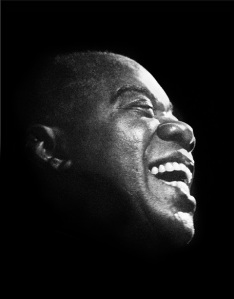 Once in the late 1950s, when our friend, the bassist “Squire” Girsback, was on the road as a member the Louis Armstrong All Stars, Squire invited us to his home on the San Francisco Peninsula to enjoy red beans and rice and meet the great man.
Once in the late 1950s, when our friend, the bassist “Squire” Girsback, was on the road as a member the Louis Armstrong All Stars, Squire invited us to his home on the San Francisco Peninsula to enjoy red beans and rice and meet the great man.
Louis was sitting on the floor in a back bedroom with his pants legs rolled up and a big plate of the beloved New Orleans dish in his lap. He was glad to meet Squire’s friends but looked slightly sheepish at first because he was hiding from a road manager one of whose jobs was to prevent Louis, who was afflicted with stomach problems, from eating the wrong foods, including such good ole spicy n’owlins fare.
I was not yet a photographer, but would soon become one, and would meet Armstrong one more time — in 1962, at Rutgers University — and photograph him there. The picture on this page was never printed until 2014, 52 years later. A print of it is going to the unique Louis Armstrong archive in Queens, New York, and another will be donated to Stanford University, whose Archive of Recorded Sound holds important jazz collections. These include those of the San Francisco Traditional Jazz Foundation, the original Monterey Jazz Festival tapes, and the over 400 Jim Cullum radio shows which Stanford has been streaming free worldwide, 24 hours a day.
Squire, in semi-retirement, sometimes regaled us with stories of those two years with Louis — the highlight of the bass man’s life. Constantly playing one night concerts in huge auditoriums on the road, the All Stars used a set routine, like most successful touring shows. Squire told us the players mostly played the same notes, in the same places, with the same crowd-pleasing antics, every night. With some exceptions — especially Satch. Now and then, Louis would seemingly receive some message from outer space and blow — or sing — a flurry of notes Squire never heard before or since. The band just kept the same routine going, but Squire would answer these flourishes with a special flurry of his own, which caused “Pops” — who heard everything happening in his band at all times — to turn and give his bass man a big wink. Squire carried those winks in his heart until the day he died.
Professionalism in any field means producing, or reproducing, a reliable product. Careful preparation, good chops and perfect execution. Big bucks in the top echelon of the entertainment industry is no different in this respect from bands remaining stable, and stable enough to get invited back every year to established festivals.
But is this middlebrow predictability not fundamentally in conflict with a premise of jazz, namely spontaneity? Many musicians will tell you that some of the great moments in jazz happen out of the limelight, in dim bars or backroom settings allowing for creative chemistry — happy accidents. Which means leaving open the possibility for bands and players to depart from expected routines, even at the cost of the occasional wrong chord or creative “mistake.” Dimly lit Bay Area joints like Pier 23 and Café Borrone and Nick’s and Berkeley’s old Monkey Inn are and were the seedbed for such creativity. As were, in the whole history of jazz, a precious few record labels, and leaders whose DNA understands not only reliability but freshness.
Louis’ crowd-pleasing was the opposite of a circus routine. It flowed directly from his heart in communication with other hearts — from an understanding, in his personal DNA, which was inseparable from the DNA of New Orleans jazz, that this music is about a kind of inner and outer openness in which spontaneity is key.
 Squire Girsback, San Francisco Peninsula, 1970s © William Carter
Squire Girsback, San Francisco Peninsula, 1970s © William Carter
Copyright statement: William Carter papers, © Stanford University Libraries. Click here for a detailed usage guide.
Much More on the Kurds Part 6
northern Iraq 1965
photographs and text © William Carter
They defended their birthright as a people.
Copyright statement: William Carter papers, © Stanford University Libraries. Click here for a detailed usage guide.
Much More on the Kurds Part 5
northern Iraq 1965
photographs and text © William Carter
Copyright statement: William Carter papers, © Stanford University Libraries. Click here for a detailed usage guide.
Much More on the Kurds Part 4
northern Iraq 1965
photographs and text © William Carter

Mullah Mustafa Barzani (right) with an assistant

Marching peshmergas getting directions from locals

Shepherds in spring: Kurds and their lands are distinct from others in the Middle East

Migrant shepherd family in spring

Relaxing in a village tea shop

Christian girl sheltering in a cave from Iraqi bombing

Mullah Mustafa Barzani during our last interview
Copyright statement: William Carter papers, © Stanford University Libraries. Click here for a detailed usage guide.
Much More on the Kurds Part 3
northern Iraq 1965
photographs and text © William Carter

This Carter photograph was taken in Yemen, prior to William Carter’s visit to Kurdistan. Newly arrived Carter had been traveling in Yemen with veteran New York Times correspondent Dana Adams Schmidt, who told Carter about then little-known Kurdistan and who later helped him get there.

Kurdish villagers beside a well-used road in northern Iraq

Kurdish village, northern Iraq

Spring religious ritual, near the Iraq-Iran border

Spring religious ritual, near the Iran-Iraq border
Copyright statement: William Carter papers, © Stanford University Libraries. Click here for a detailed usage guide.
Much More on the Kurds Part 2
northern Iraq 1965
photographs and text © William Carter

Native Ibex from Kurdish area of eastern Iraq or western Iran

Conference between locals and peshmerga commanders

Burial of an executed “josh” (“donkey” or Iraqi government spy)

Peshmergas enjoying home hospitality in village north of Suleimaniya
 Peshmerga platoon on the march
Peshmerga platoon on the march
Copyright statement: William Carter papers, © Stanford University Libraries. Click here for a detailed usage guide.
Seeds of Today’s Headlines
plus some heartwarming responses
by William Carter
Running in this space for several months, my Kurdish blogs attracted wide attention, not least from the Kurds themselves. Seeing unknown, 50-year-old photographs of their own legendary founding hero, Mullah Mustafa Barzani (left), was a heart-warming revelation.
One non-Kurd who responded was Chris Kutschera, who runs a photo archive in Paris dedicated to his and others’ photographs from Kurdistan, and to his several books and many articles on the Kurds. Chris has added a number of my 1965 photographs to his ongoing collection, which can be visited at www.chris-kutschera.com
These days I get up early to scour the headlines for the latest news of the Kurdish peshmergas’ valiant struggle against the ISIS marauders in Syria and Iraq, helped by U.S. airdrops of supplies. Those of you who see the New Yorker magazine can read Dexter Filkins’ recent report in depth and detail on these special people.
Over the years visiting journalists, including myself, have admired these proud and independent folks to the point of struggling to maintain professional objectivity on the ins and outs of their long-running struggle for “autonomy” within existing Iraq, Turkey, and Syria — or, one day perhaps, independence as a separate nation.
One Kurd who responded to my photographs of the ancient Mesopotamian stones was Kozad Ahmed. A Kurdish archeologist born in Baghdad in 1967 (two years after my visit), he contextualized those stones in his detailed 2012 Ph.D. thesis at the University of Leiden in Holland, titled “The Beginnings of Ancient Kurdistan” (c. 2500-1500): A Historical and Cultural Synthesis.” Evidently those stones were smuggled out of the village of Betwata the 1970s, auctioned in Geneva and are now in museums in Jerusalem and Baghdad.
Copyright statement: William Carter papers, © Stanford University Libraries. Click here for a detailed usage guide.
Iraqi Kurdistan: More Surprises (Part 3)
Many of us learned in school that Mesopotamia’s Tigris-Euphrates Valley cradled the world’s earliest civilization. Unending waves of conquest would sweep over this well-watered land, obliterating much — but not all — of its history. Recent violence in northern Iraq spotlights once-isolated ethnic groups, such as the Yazidis and the Chaldean Christians; Aramaic-speaking villagers as well as remote members of the Muslim Kadri sect. Some of these far-flung peoples and languages date back thousands of years.
And, archeologists have long suspected there were important artifacts from ancient Mesopotamia still awaiting discovery in caves in Kurdistan. I learned this after a journalistic trek on foot and by donkey through the mountains of Iraqi Kurdistan “recently” — only fifty years ago.
Welcomed by the, as yet, little-known Kurdish peshmerga guerrilla fighters, I was doing a photo story on their long-running struggle for autonomy within Iraq and Turkey. At one point my hosts showed me broken, thick stone rock carvings a local sheik had had dragged out of a cave. Evidently he wanted to sell them to me, but I was not in that business. It would have taken an expedition to move them. I took pictures of them, with their hieroglyphic writing. The next year, in London, I showed the photographs to the British Museum. The experts became quite interested, and wanted lots of details, including the exact location, which I was unable to provide other than “oh, we just happen to stop there for tea last June on the march from point A to point B, somewhere north of Sulaimaniya.” Nonetheless the British Museum reproduced my pictures in a scholarly publication.
Given the destruction of the once wonderful Baghdad Museum occasioned by the Bush-era invasion, I sometimes wonder if that stele, and others (?) like it, are not safer staying in their caves. During Saddam Hussein’s ruthless bombings and gassings of isolated ethnic villages — as under the current Isis marauders — some of these thousand-year survivors have themselves reverted to living in caves. Again, I photographed one group all too briefly before hurrying on to rejoin the peshmergas’ march. I always wanted to go back and explore these other ethnicities of Kurdistan, but that was not to be. This year, 2014, the Kurds invited me to fly into Erbil, now a modern city built on oil revenues. We would have loved to, but pushing 80, I hesitated — luckily, just before a new wave of gunmen surrounded the city.
Iraqi Kurdistan 1965 photographs © William Carter
Copyright statement: William Carter papers, © Stanford University Libraries. Click here for a detailed usage guide.
Iraqi Kurdistan: More Surprises (Part 2)
In this part we focus, in black and white, on the villagers and shepherds living in the mountains of northern Iraq in 1965.
For background text, please see the previous blog (part 1).
Iraqi Kurdistan 1965 photographs © William Carter
Copyright statement: William Carter papers, © Stanford University Libraries. Click here for a detailed usage guide.
Good Vibes
Roger Glenn presents “Beware the Vibes of March”
Just when you thought jazz had lofted entirely up into the rarified air of college courses and elegant concert halls, it’s nice to recross the tracks — back to the face-to-face interactions and inspirations where America’s music came from. My definition of a great place to hear jazz, of whatever era, is when an audience member takes a short break, and returns to his seat — only to find it occupied by one of the band members sitting out that tune. Which is what happened to me last month at one of the most venerable and funkiest jazz institutions near San Francisco — the Bach Dynamite and Dancing Society at Half Moon Bay, California.
The style and attitudes of the highly acclaimed presenters fit that bill. Leader Roger Glenn, who plays as many vibes and more woodwinds than I can count, grew up literally crawling around the feet of folks like Louis Armstrong because Roger’s father, Tyree, was a major trombonist of that era who often worked in Louis’ bands.
Equally renowned were many of the performers at the “Beware the Vibes of March” gig. Way back, the multi-talented Rex Allen cut his teeth with the Bob Crosby band, and for decades Rex has appeared in countless festivals and solo spots — often as a swing trombonist fronting his own Big Band.
This was a vibrant LATIN JAZZ afternoon. The others were too many, and too talented, to cite beyond this stellar lineup: Charlie Barreda on vibes, Michael Hatfield on vibes, Smith Dobson V on vibes, Leon Joyce Jr. on drums, David K. Mathews on piano, Robb Fisher on bass, and Rafael Ramirez on congas.
With the sun gradually slipping into the Pacific, and folks schlepping munchies and wine glasses to and from the breezy porch, and old Pete Douglas, idiosyncratic and timeless patriarch of the period structure, happily lolling at the swirling epicenter his home, his ankles crossed atop his ancient desk, there were more multigenerational smiles all round than one would care to count. These afternoons are as much private parties as concerts. Still going strong (since 1964) in this former private residence, Bach Dynamite is a non-profit 501c(3), and you can get all the data at their website here.
By the way, no sign says: No Photography. But how is this enforced? Example: the conga player’s i-Pad rang in his pocket in the middle of the first tune. That helped loosen up the audience, if further loosening were needed.
Photos: Roger Glenn (top) and friends, © William Carter, March 23, 2014
Nikon D-800, hand-held, no flash, processed on a Mac in Aperture.
Copyright statement: William Carter papers, © Stanford University Libraries. Click here for a detailed usage guide.
History of a Cover Image
Byways of Photo Memory
“One never knows, do one?” That famous quote, attributed to pianist Fats Waller, can be applied to photographs.
My day’s jaunt from Manhattan’s Lower East Side to Staten Island in November, 1962 was a fun journey with casual friends. Preserved on film, some of the moments are shown below. Fifty two years later, I have no idea of anyone’s name, but one of the pictures is being used on the May 2014 cover of Sun Magazine, as it was on the cover of my 2011 book, Causes and Spirits.
We stopped at the little girl’s house for an hour at most. We had taken the Staten Island Ferry, and later visited the Catholic Worker’s Peter Maurin House (but those are other stories).
I was using a Leica which was later ripped off my neck during a riot in Ma’an, Jordan (yet another story).
I guess we old folks are story tellers.
Here are scans of the uncorrected original shoot on 35mm Tri-X, dust spots and all. Do you know which became the cover image? Answer next time. The girl(s) must be around 60 now.
Copyright statement: William Carter papers, © Stanford University Libraries. Click here for a detailed usage guide.
Egypt Update 12/3/2013
Text: Another dispatch from our friend and correspondent, Virginia Papadopoulo, living and teaching in Egypt.
Photographs: © William Carter 1964: Amid profound changes, has Egypt’s inner spirit survived?
 I wish I had good news for you from Cairo, but things just keep getting worse. The word is that the American School in Maadi, where I live, had a number of students leave [see below]. Most of the U.S. Embassy families had to leave and they are closing the U.S. Consulate in Alexandria. Our school out in Sheikh Zayed did not suffer much of a loss, because most of the families are very wealthy Egyptians. Out by our school life goes on as usual – shopping malls are popping up like mushrooms, and the restaurants are open and full. The reason I left the desert [see below] after my first year was because It was not Egypt. Could have been any wealthy neighborhood I have visited in the world.
I wish I had good news for you from Cairo, but things just keep getting worse. The word is that the American School in Maadi, where I live, had a number of students leave [see below]. Most of the U.S. Embassy families had to leave and they are closing the U.S. Consulate in Alexandria. Our school out in Sheikh Zayed did not suffer much of a loss, because most of the families are very wealthy Egyptians. Out by our school life goes on as usual – shopping malls are popping up like mushrooms, and the restaurants are open and full. The reason I left the desert [see below] after my first year was because It was not Egypt. Could have been any wealthy neighborhood I have visited in the world.
What does worry me is the incidence of attacks on fellow teachers. One wonderful Dutch couple were mugged twice in the last several months. They are now looking to leave, and they love Cairo. Local Egyptian friends were stopped at check points during the curfew and harassed, threatened, and taken to jail. Two teachers went through very humiliating luggage searches coming from the airport. Small incidents, but they end up being the topic of conversation. There are more demonstrations in my town, but I don’t usually go out on Friday. The town of Mohandiseen where a lot of teachers live is becoming unbearable for many because of the constant demonstrations, and they are moving out near the school and not returning next year.
I am sitting here in my apartment and there are horns blaring, gun shots, and packs of dogs barking, but it could be from a wedding — it is hard to tell.
I am not out and about at night unless with friends, and even that is pretty local. I walk to and from my bus on the same route every day and I know my neighborhood. I greet and am greeted every day and feel perfectly safe – maybe being 70 has something to do with that. Or, maybe I just want to believe everything is ok, to give me another reason to keep doing what I love so much, and to stay here.
later:
Just spoke to a colleague whose husband works at the American Embassy. She was told not to come back in September, but her husband stayed in Egypt. She had to put her three children into schools in the US, but finally returned this week. Her children go to CAC. Her words to me were, “The school had approximately 1,400 students before the first revolution, and they are down to about 900 after the 2nd revolution.” So somewhere between 1-2 hundred have not returned this year. There are several other international schools that have shut down completely, but to be fair, people are returning. Who they are I don’t know. The important thing is that these returns do not significantly improve the tourist trade—it is dying a slow death. It is absolutely the perfect time to “See Egypt” —no crowds.
When I say the desert, I am talking about an area called Sheikh Zayed, and it is in the larger area of 6 October. It is southwest of the pyramids, (which we see twice a day, and still bring tears to my eyes) and probably 25 miles out. Initially the drive was through farmland—beautiful. There were compounds near the school, but mostly sand four years ago. The view from the front of my school was truly nothing but desert. There were no restaurants in our area and only one huge grocery store to shop in a few miles from where we lived, which you had to take a taxi to. That was four years ago, and the reason why I wanted to get out of the desert and move into the life of Cairo proper. Today the sand is gone and all you see for miles and miles are huge walled compounds and shopping malls. The beautiful farmland is vanishing, and it seem the reason is because there is no control on building. I should have invested in cement and construction equipment four years ago!
Above: Pharaoh-like statue of dictator General Gamal Nasser outside Supreme Military Headquarters, 1964: in six decades of change, does a need for strong-armed authority persist?
Copyright statement: William Carter papers, © Stanford University Libraries. Click here for a detailed usage guide.
Dave, Mao, and Me
Timing Can Be Everything
Politics — and photojournalism — make for unexpected relationships.
In 1956 the rulers of impoverished communist China tried something new. They suddenly announced North America was free to send its reporters into the insular nation. Wary of the gambit, the U.S. State Department refused to lift its own ban on Americans visiting this (then) arch-enemy. Canada, however, said okay. Quick to apply was David Lancashire, a bright 25-year-old working for an obscure provincial paper. After China accepted Lancashire’s application, the Associated Press, defying threatened U.S. sanctions, handed this Canadian photo-newbie a camera, wirephoto instructions, and a ticket to the insular Peoples’ Republic.
The first North American correspondent to cover the People’s Republic in the seven years since its birth in 1949, Lancashire travelled more than 5,000 miles across China in six weeks, producing a groundbreaking series of reports on life there — including a story on China’s Last Emperor, Pu Yi, living under house arrest. At Peking airport Dave gained unprecedented access to the makers of one of history’s most famous revolutions: his widely seen “radiophotos” featured Mao Tse Tung, Chou en-Lai, Indonesian ruler Sukarno, and associates (see below).
After that performance, the A.P. hired Lancashire permanently. In 1964 we met at A.P.’s Beirut bureau. Swapping stories of field assignments, Dave and I shared a strong side interest in jazz: he played trombone, and I played clarinet. We formed a little group rehearsing in one another’s living rooms, and even landed a theater gig as the pit band of a British musical comedy, The Boy Friend. Lancashire moved from Beirut to London about when I did, in 1966. Our friendship deepened over the years, and he became Best Man at Ulla Morris’ and my wedding in California in 1984.
Prior to Dave’s death in Toronto in 2007, he sent me some of his historic China negatives, which I hope to transfer to an appropriate institution. Below are highlights of his coverage of Mao, Chou & friends — followed by a photo of Pu Yi, the Last Emperor — then followed by one of us jamming in Beirut, and finally a 1985 wedding photo of best man Dave, bride Ulla, and groom Bill.
 China’s “Last Emperor,” Pu Yi, 1956
China’s “Last Emperor,” Pu Yi, 1956
 David Lancashire (left) and William Carter jamming in Beirut, c. 1965; unknown photographer
David Lancashire (left) and William Carter jamming in Beirut, c. 1965; unknown photographer
 Left to right: David Lancashire, Ulla Morris-Carter, and William Carter at Ulla and Bill’s wedding, San Marino, California, 1985. Photograph by Esme Gibson.
Left to right: David Lancashire, Ulla Morris-Carter, and William Carter at Ulla and Bill’s wedding, San Marino, California, 1985. Photograph by Esme Gibson.
Update on this story from Les Daly, a friend and colleague of Dave Lancashire’s:
November 26, 2013
I am looking for the compliments desk and the complaint desk.
Compliments for the delightful report on our pal Dave. It really brought back a lot of good memories. Well done, my friend.
Which brings me to the complaint desk, and some memories of my own with Dave,
“a bright 25-year old working for an obscure provincial paper.”
Bright, yes. 25-year old, yes.
The “obscure provincial newspaper” was The Herald in Montreal, Quebec, Canada, which I believe was Canada’s largest city at the time, and may still be although of that I am not sure. The Herald was a feisty tabloid, one of three or four English language dailies, that gave young reporters like Dave and me a fair amount of latitude and excitement and an opportunity to learn the craft, as we would later like to think of it, from reporting right through to putting the paper to bed. It died, as did its broadsheet parent, not long after we left, although I doubt the events were related.
Why do I care?
Because Dave and I were working on the Herald together. I was a sportswriter, my first professional newspaper job. Dave was a city-side reporter. We used to hang around together, and ski together and think about girls together. Dave thought better than I did and was far more successful. Always. It might have been the trombone or the skiing, or both. Or just Dave. After he quit the paper and went back to Toronto, he called me one night (we worked nights) and said he was going to China and asked if I wanted to come with him. I told him I couldn’t do that because I am an American and we were, as you point out, still forbidden to travel there. Then, being a sportswriter and thus with limited worldly vision, I asked him, “Why are you going to China anyway?”
“Because,” he replied in his laughing way, “I like Chinese food.”
I asked him, “Can’t you get takeout?” At which point he said goodbye and hung up.
Later on I saw Dave in Beirut, where I believe I first met Ulla, and later in London after he left Beirut claiming he was tired of the Middle East where at press conferences he “was the only guy in the room without a gun.”
More relevant is that Dave and DeeDee stayed with us in Los Angeles when they came for your wedding. I saw them several times after that in Toronto when I went there on business, and followed DeeDee’s condition, and we talked often on the phone but not often enough to know what was coming for Dave. I regret that.
Anyway , you did a fine job and the photos were notable too. Thanks for bringing him back in a way.
Crossing Party Lines: a Follow-Up
Thanks to all those who responded positively to my last blog, “Crossing Party Lines — Creatively.” Several of you complimented us on our wedding pictures! Which made me realize, to my chagrin, that I had neglected to thank and credit our good photographer-friend, who graciously gave us those lovely prints 28+ years ago: Esme Gibson! The event was in San Marino, California, and was one photo opportunity I couldn’t handle myself.
I regret I have no such light to shed on the current Syrian tragedy. But you can see my earlier blogs on the reported damages to that nation’s ancient monuments and peoples: “Contested Stones Redux” and “Plight of Syria’s Kurds Breaks into the News.”
Plus, here are four more photographs, semi-related to current events in the Middle East.
The first, done on assignment from the US Information Agency, shows the Baghdad Museum, its ancient Mesopotamian treasures still intact, in 1965 — long before the destruction occasioned by the U.S. invasion of Iraq.
The second photograph is of unemployed men in Aleppo, Syria in 1993.
The third is from Gaza in 1993.
The fourth is in an orphanage in Jerusalem, 1993.
Copyright statement: William Carter papers, © Stanford University Libraries. Click here for a detailed usage guide.
Crossing Party Lines – Creatively
When angry goons with Kalashnikovs slung over their shoulders banged on the door, the man who later married us opened with a big grin and invited them in for tea.
Such was the spirit — and cross-cultural savvy — of John Markarian, the founding President of the Armenian-American College of Beirut, a post in which he served for three decades. The date was October 26, 1975 — in the depths of the terrible civil wars that destroyed Lebanon’s old image as the Switzerland of the Middle East.
John’s invitation to the goons was the first of several similar incidents in which he effectively saved the college. A devout Presbyterian minister with a Ph.D. from Princeton, he knew Muslim society almost as well as he knew the Bible. His actions at the college door — and later the title of his autobiography — came to him from the Book of Proverbs, and Paul’s Letters to the Romans: “When your enemy is thirsty, give him a drink.”
Leaving their weapons near the door, the would-be assailants happily sat down and sipped Arab-style cups of tea with John and his wife Inge — then departed, leaving the college alone.
Not that a similar strategy would necessarily work in Cairo today. Still, it’s worth remembering that fixed positions often lead to fixed bayonets.
I am glad the U.S. State Department is no longer led by Condoleezza Rice. In Cairo, near the beginning of her term, she announced very publicly to Hosni Mubarak and the listening Arab world that the U.S. was about to confer democracy on the Middle East.
I did work out of Beirut as a photojournalist in the 1960s. For many more years I have worked as a fine-art photographer, and for even more years I’ve been a semi-professional jazz clarinetist.
But some of my richest experiences were as a devotee of spiritual master Baba Muktananda in India. The rules in his traditional Hindu ashram were strict. More broadly, that experience freed me to more fully appreciate, later, the achievements of many other deep masters, such the Dalai Lama.
Now pushing 80, I have been assembling my jazz pictures and memories spanning six decades. Crossing – or not crossing – party lines can have consequences in this field as well. Originally a fierce traditional-jazz purist, I gradually modified that position. For one thing, I noticed that the jazz masters were less often purists than many of their fans. They played as they played — and were cordial with their colleagues across the aisles of nightclubs and recording studios.
Twenty-five years ago, in Mendota, Minnesota, I had dinner with famous bassist Milt Hinton before working a gig with him. Showing me layouts of his new photo book, Milt told me how he had transitioned through every style of jazz, from the 1920s, through years on the road with swing bands, to studio gigs in the “golden age” of modernism and after.
Later, I met other major musicians of today, like Dick Hyman, Shelly Berg, and Arturo Sandoval — all of whom continue to cross over, easily, among jazz styles.
As for me, I still just play funky New Orleans clarinet from the earliest period of jazz. The other night we played a Lindy Hop swing dance with Clint Baker’s band: not even a bandstand, and the light I could see in the dancers’ eyes and feet had no name or form.
And Egypt?
The politics appear far from hopeful for the foreseeable future.
That wonderful land, with its vast plurality of peoples, has a long habit of being governed by pharaohs.
We can only hope Egypt, with its sophisticated depth, soon finds its way back to a sense of unity in diversity — a vision of its own stillness at the core.
Above: Pastor John Markarian officiating at Ulla’s and Bill’s wedding, March 23, 1985.
Below: Dick Hyman at Filoli, near San Francisco: the fleet, versatile jazz pianist is known for his expertise across the “party lines” of many styles and periods, from ragtime to swing to contemporary.
Photograph of Dick Hyman © William Carter 2010
Copyright statement: William Carter papers, © Stanford University Libraries. Click here for a detailed usage guide.
CC, The Family Gymnast
Our grand-daughter, CC, was 13. Of course we still think she is a movie star.
Her Dad, Kushi, is with her in the last picture. Born in Israel, his family are Kurdish Jews. They were born in a village in northeastern Iran where ancient Aramaic is still spoken. CC’s Mom was born in Lebanon of a German Mom and an American Dad. CC’s proper name means “wild rose” in Kurdish.
She lives in Oakland, California. CC is our beautiful vision of a global village.
Photographed by William Carter in San Mateo, California, March 9, 2013
Copyright statement: William Carter papers, © Stanford University Libraries. Click here for a detailed usage guide.
Carters in SF MOMA Show

Photograph by Chuck Frankel. Viewing Carter prints at SFMOMA: this museum was among the first in the world to collect photographs as a fine art.
From November 29, 2012 the San Francisco Museum of Modern Art is showing the following 4 William Carter prints. Part of Carter’s “Humanity” series, as represented in his book Causes and Spirits, these photographs are in SF MOMA’s permanent collection and can be seen in the rooms displaying the Museum’s ongoing series, “Picturing Modernity.”
Copyright statement: William Carter papers, © Stanford University Libraries. Click here for a detailed usage guide.
Needed: World-Class Vision
The Current Candidates Can’t Cut It

John F. Kennedy in Berkeley, CA: Cuba, Berlin, segregation, strikes, and our man on the moon photograph © William Carter circa 1960
In view of the gravity of the job he wants us to give him, Romney is a cardboard cutout, a talking puppet. He panders to a sentimental view of a 1950s USA, replete with a triumphalist foreign policy, go-it-alone economics, and class warfare. He shows zero sensitivity to the broad heart and soul of America at home. He displays zero understanding of the global realities of today’s business and politics. No major entrepreneur of the 21st century could survive if he followed Romney’s reductionist view of capitalism, or his isolationist outlook on a complex world.
Both candidates, in fact, project a sentimental ’50s vision of an America in isolation. Obama’s knee-jerk reversion to the populist rhetoric of class warfare is worse than Romney’s. Rather than floating nice emotional balloons about a mythologized middle class, as they did in their conventions, both candidates should be showing us world maps with trading routes and population numbers. One of the best articles I’ve read recently is the front page of one of the sections of today’s Wall Street Journal by Robert Kaplan. Simple geography goes a long way toward casting things like the Iran question way beyond the narrow focus of Israel and Hormuz. Both candidates could start by pointing out the geostrategic fact that, for better or worse, the US recently took out both of Iran’s worst long-term enemies — Iraq and Afghanistan — both of which are (of course) already reverting to their eternal tribalism.
As we are to ours.
By default, Romney appears not to disagree with Secretary Clinton’s foreign policy activities, for example in respect to the South China Sea. If he does disagree, let’s hear his alternative plan, relationship by relationship across that vast archipelago of islands, moderate religious affiliations, tight trade corridors and natural resources, starting with the differing views and interests of places like Pakistan and China and Australia.
Sorry, but I don’t give a damn about what either candidate’s mother fed them for breakfast. We need big-souled, broad-gauged, wide-view leadership. If the world’s most powerful man is going to have an opinion on appropriate capitols for Israel and Palestine (as he should), he needs to demonstrate a balanced understanding of the millennial conflicts over these eternally contested areas.
I agree with Romney when he attacks over-regulation of US business. But we need far more fact and detail on this: exactly which regulations he would change or keep, and why. Instead of treating us to cartoonish mom-and-pop mythologies, please posit a long-term reliable playing field on which managers and investors can plan their domestic and international strategies and risks. Take Wall Street: I happen to think the big banks brought regulation on themselves by the excesses that caused the 2008 collapse — requiring rescue with your and my taxpayer money. Obama lacks the sense, feel, experience of running a business, and business is the foundation of the economy; but Romney lacks the sense and feel of the globalized community his decisions would affect. Nobody wants to mention Fiat’s key role in rescuing Chrysler: okay, Obama’s boys worked hard on the auto debacle, but for all that only a foreign company was willing to step up and do it. Are we Americans, in the 21st century, too poorly educated to grasp such plain facts? Or to be told it is beyond any nation’s power to just call up jobs?
Any candidate who slashed the slogans and started with a simplified world map, overlaid with trade and population data, and interwoven with a modicum of historical perspective, and could abbreviate all this to under an hour — he or she would attract my vote. I’m less interested in specific policy predictions than in the demonstration of world class thinking. Such a speech could be given in, say, Long Beach, California, against the backdrop of all the container ships arriving from every point on earth. It should include a graph of trade dollars and deficits flowing in all directions, and what all this means for the future of humanity and the planet.
No candidate is worth his salt if he is afraid to stand up and say, “This is no longer the world of your fathers. There is no sentimental return to the 1950s. We are living in a world as highly integrated as its trade, as its broader economies, as its micro and macro political relationships, as its climate zones and as its languages and peoples. How many hot wars have you won since 1945? Get used to it, my friends, and live appropriately.”

Mother Theresa in Bombay, India: seeing God in the hearts of the least of these photograph © William Carter circa 1984
Copyright statement: William Carter papers, © Stanford University Libraries. Click here for a detailed usage guide.
Jazz + Photography = Now, Part 2: Live Moments
“At the still point of the turning world…” wrote T.S. Eliot: “there is only the dance.”
May 12, 2012
Epic Swing Night at the Masonic Lodge in San Mateo, California
Clint Baker, cornet; William Carter, Clarinet; Jim Klippert, trombone; Jason Vanderford, guitar; Ray Skjelbred, piano; Bill Reinhart, bass, Steve Apple, drums
Video by Rae Ann Hopkins Berry
Canal Street Blues:
Holler Blues:
Dinah:
Copyright statement: William Carter papers, © Stanford University Libraries. Click here for a detailed usage guide.


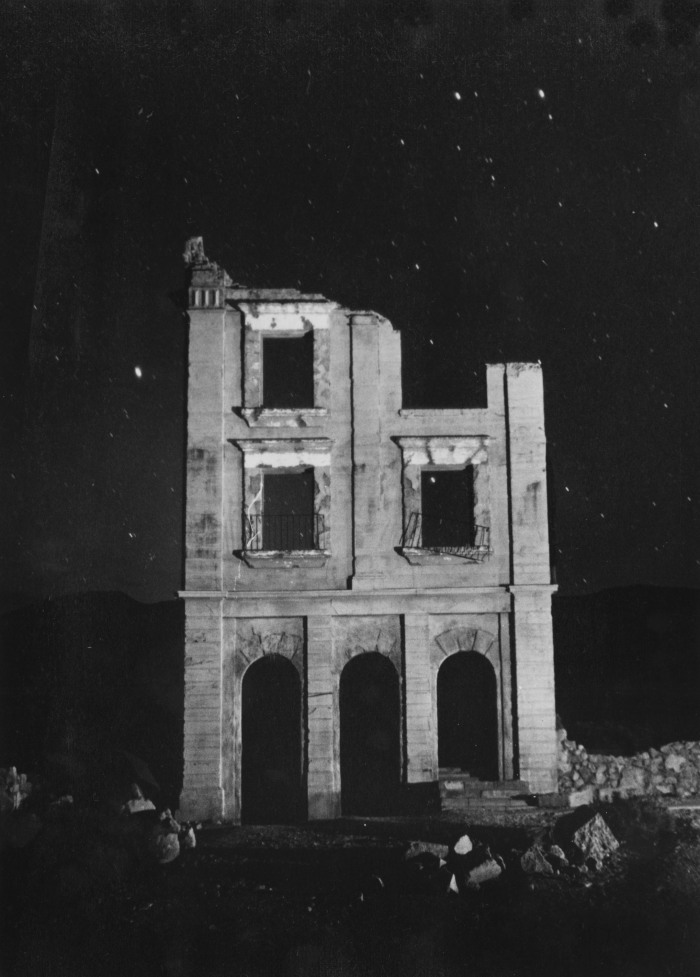





































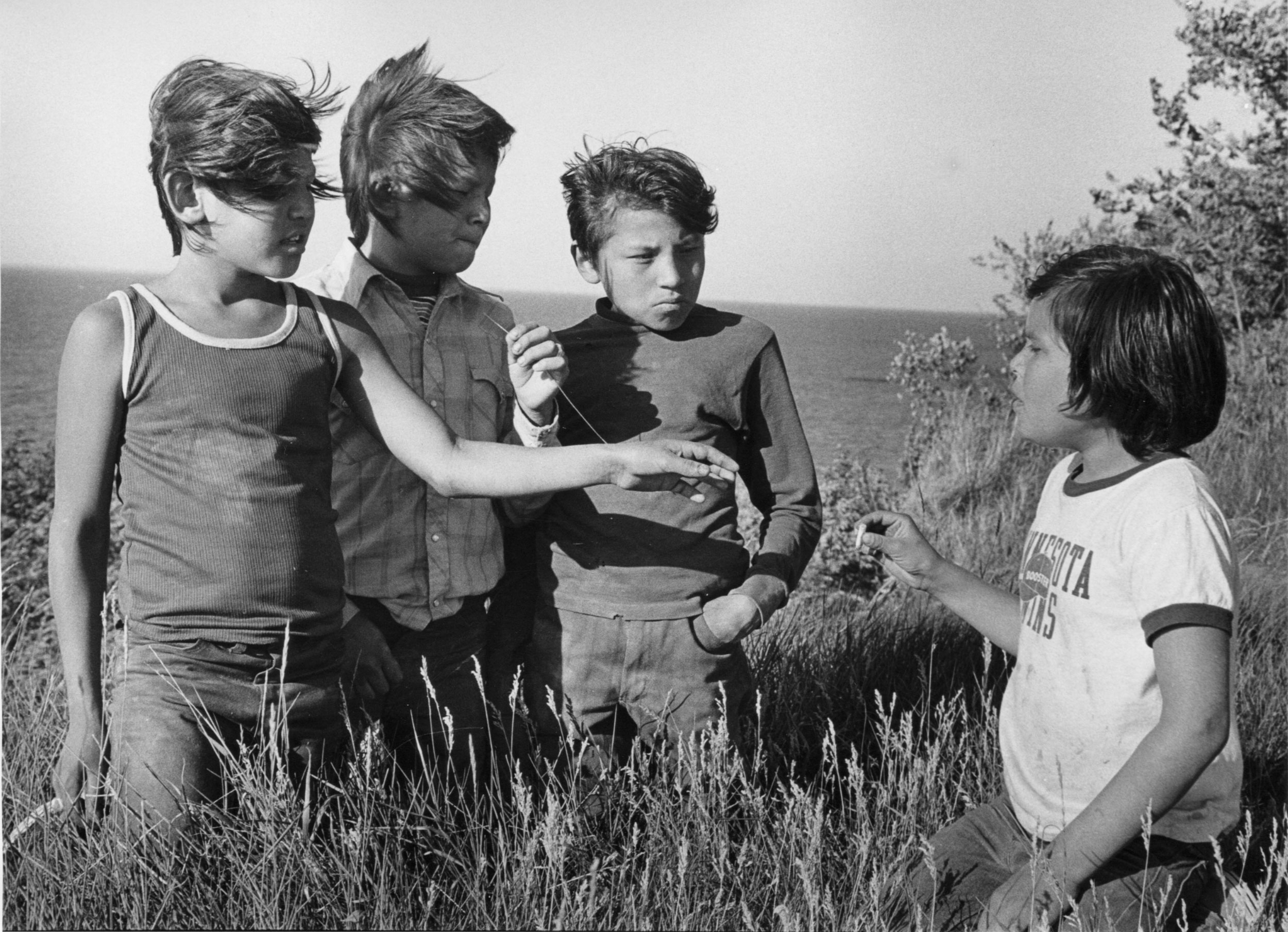




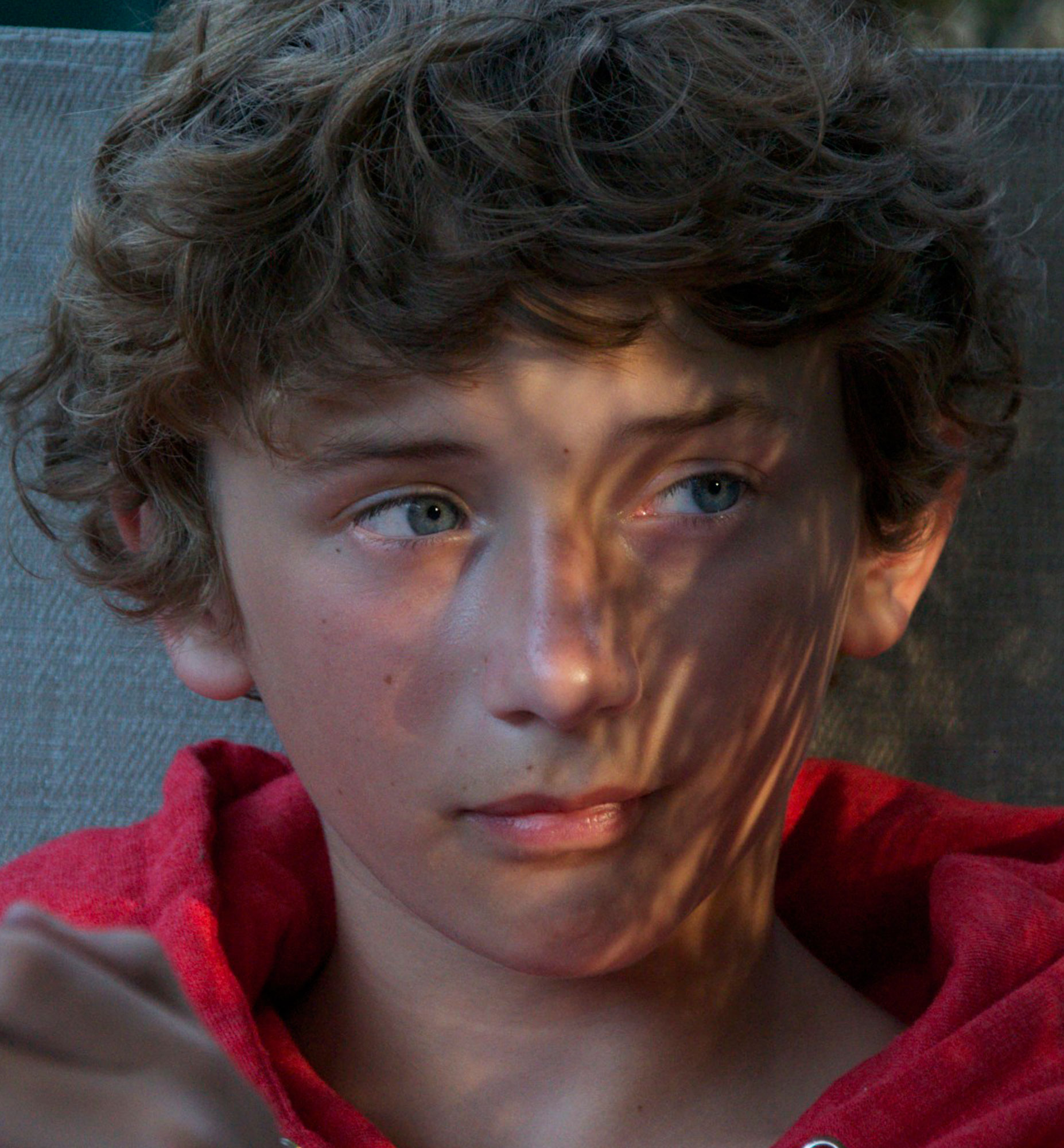


























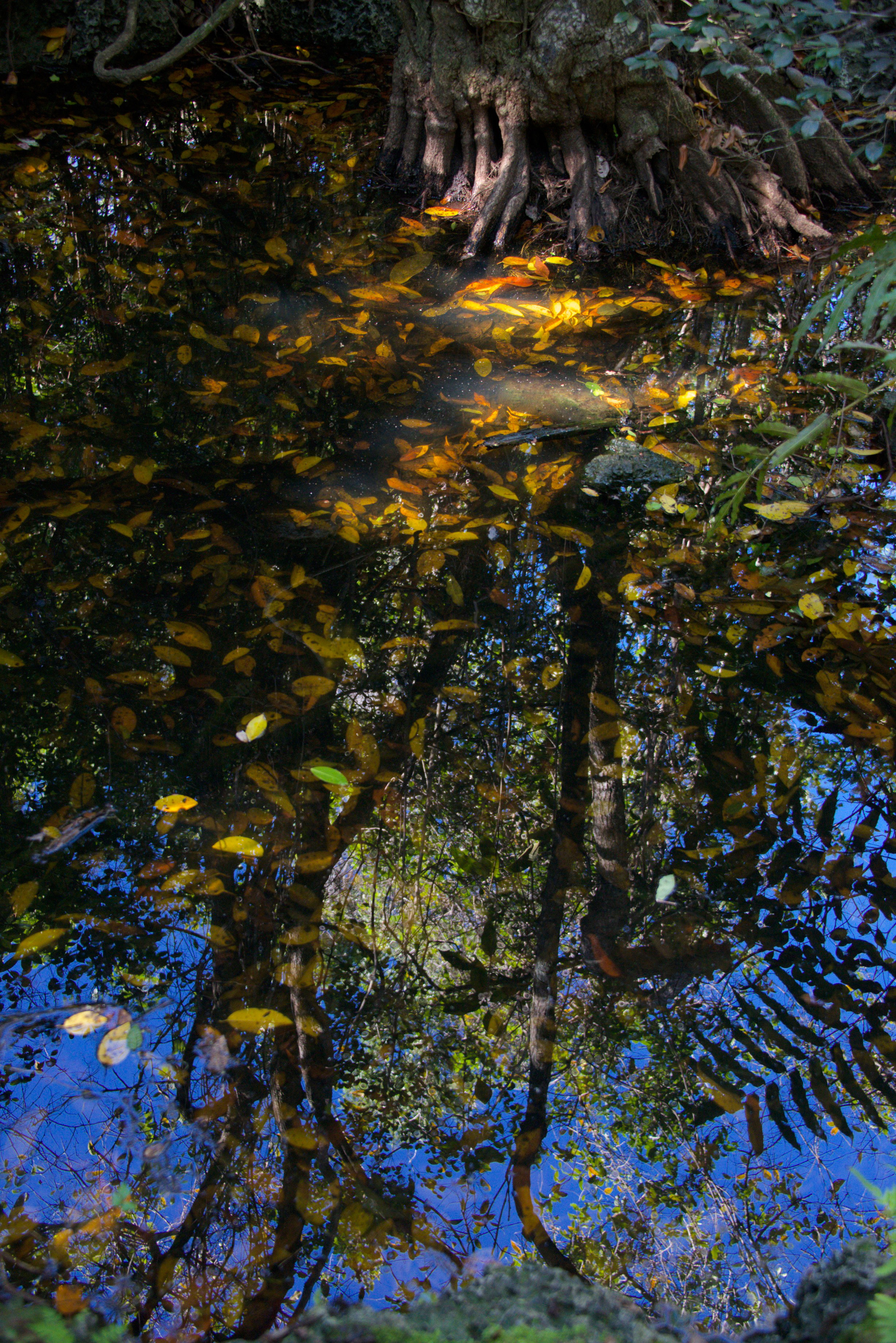

































































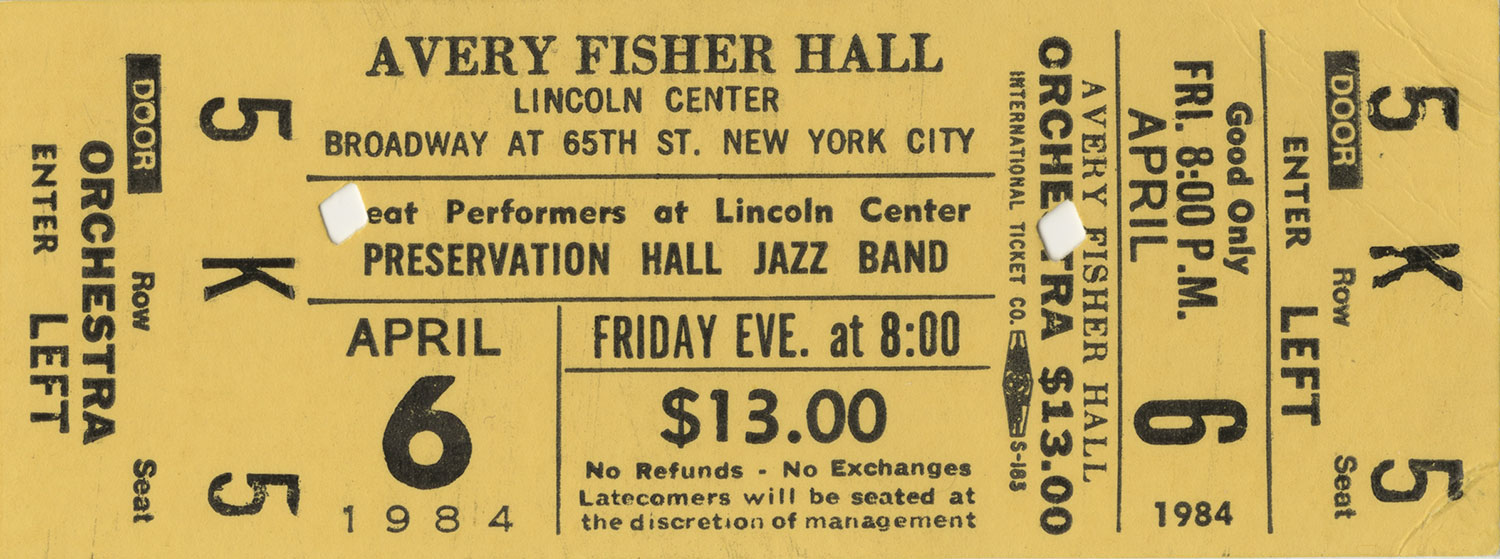




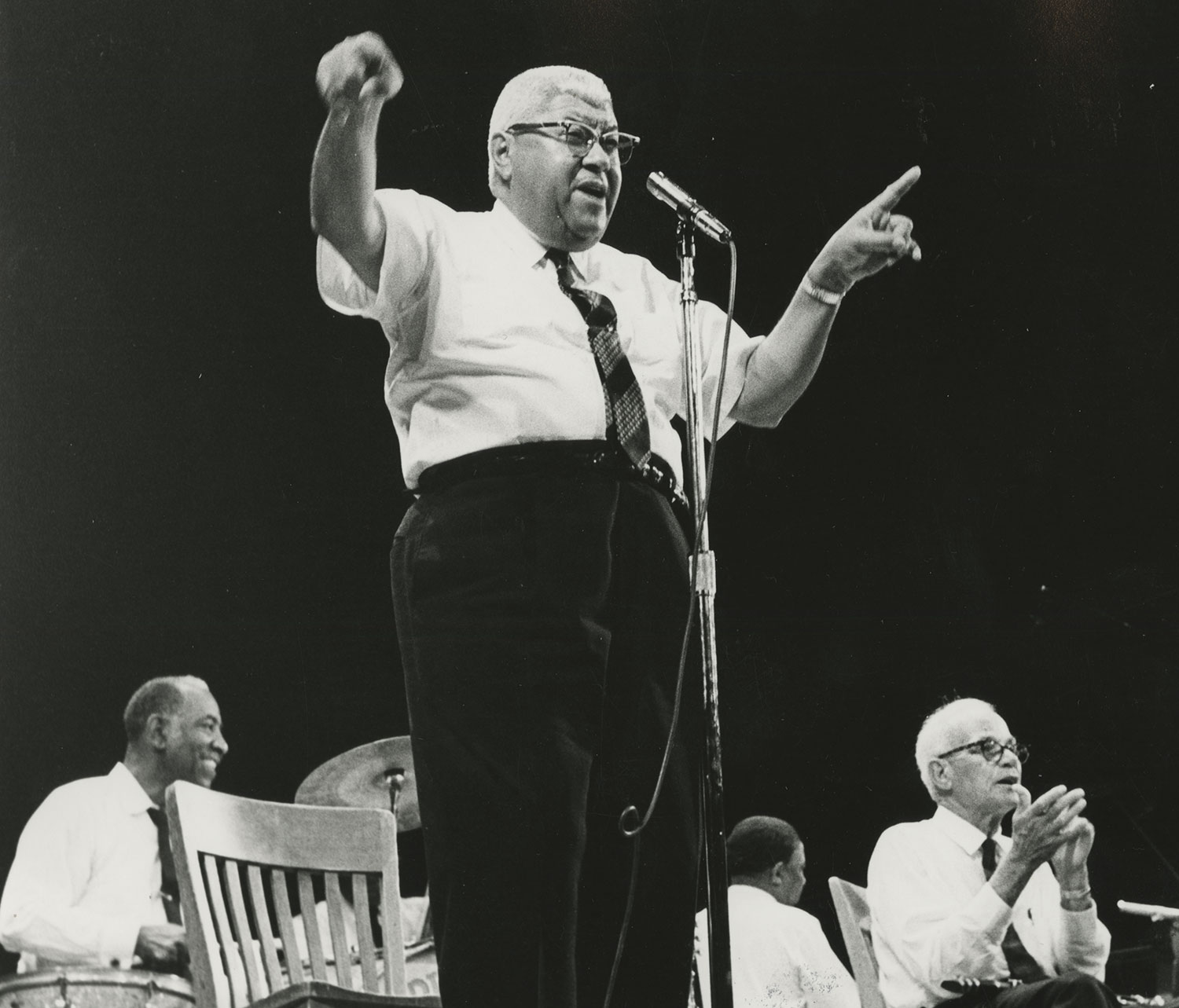

















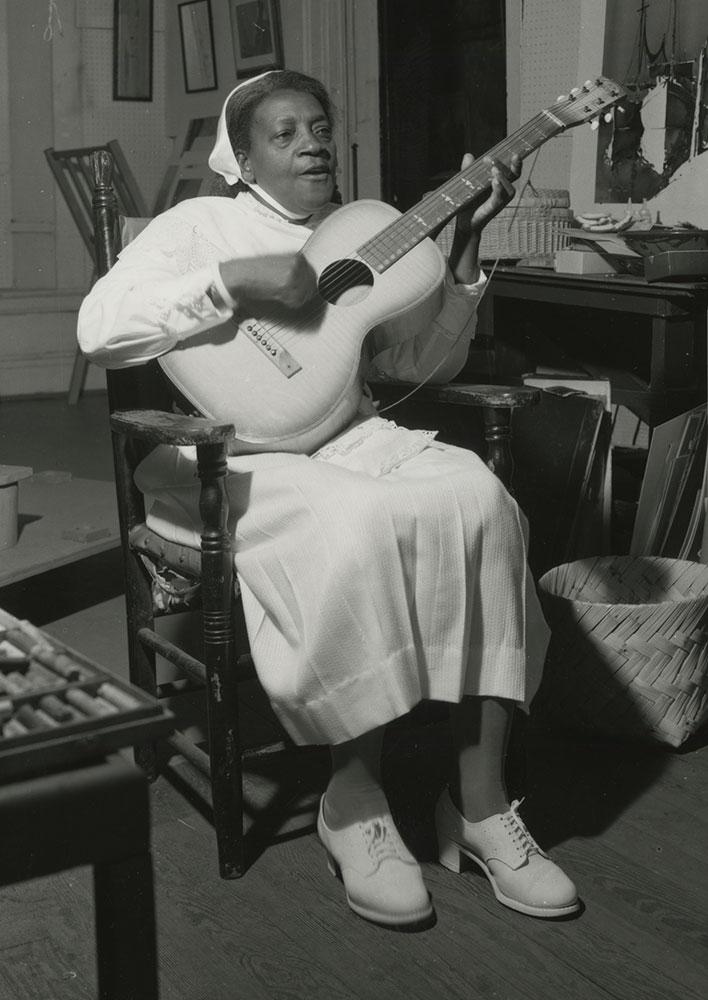
















































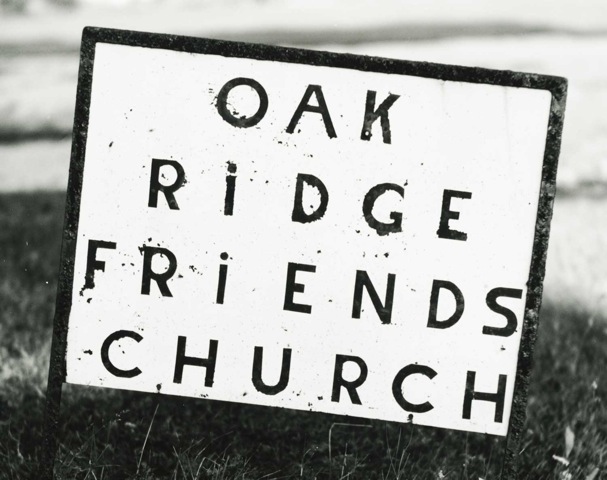




















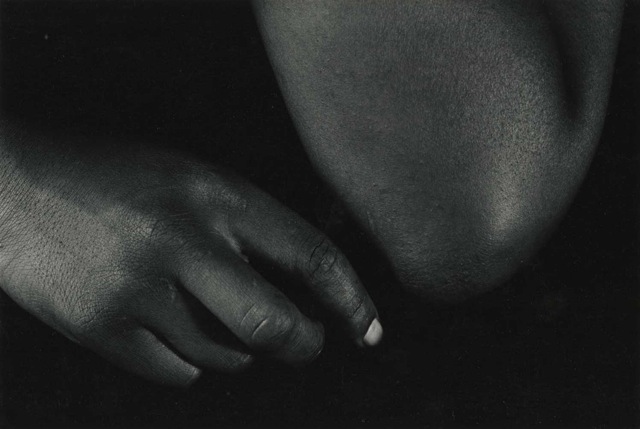





























































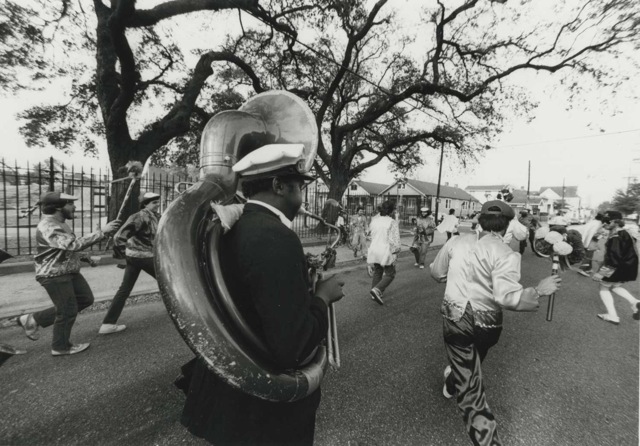

















































































































































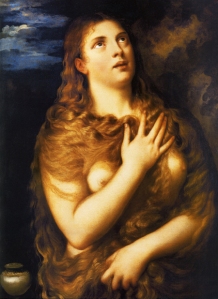

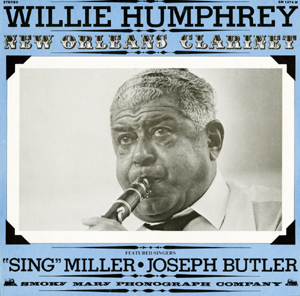


























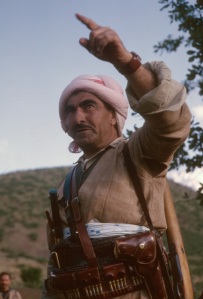

















































![[kneeling in a line] With Kurdish pesh mergas, Iraq, 1965 [kneeling in a line] With Kurdish pesh mergas, Iraq, 1965](https://bywilliamcarter.files.wordpress.com/2012/03/kurdsi002.jpg?w=232&resize=232%2C150#038;h=150)































